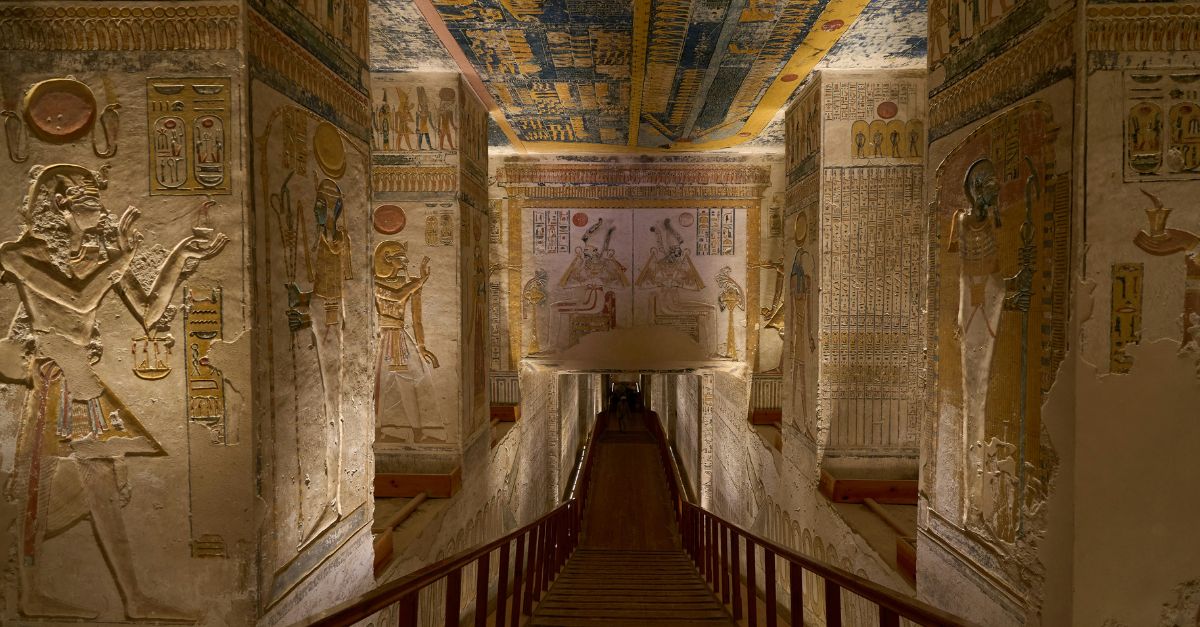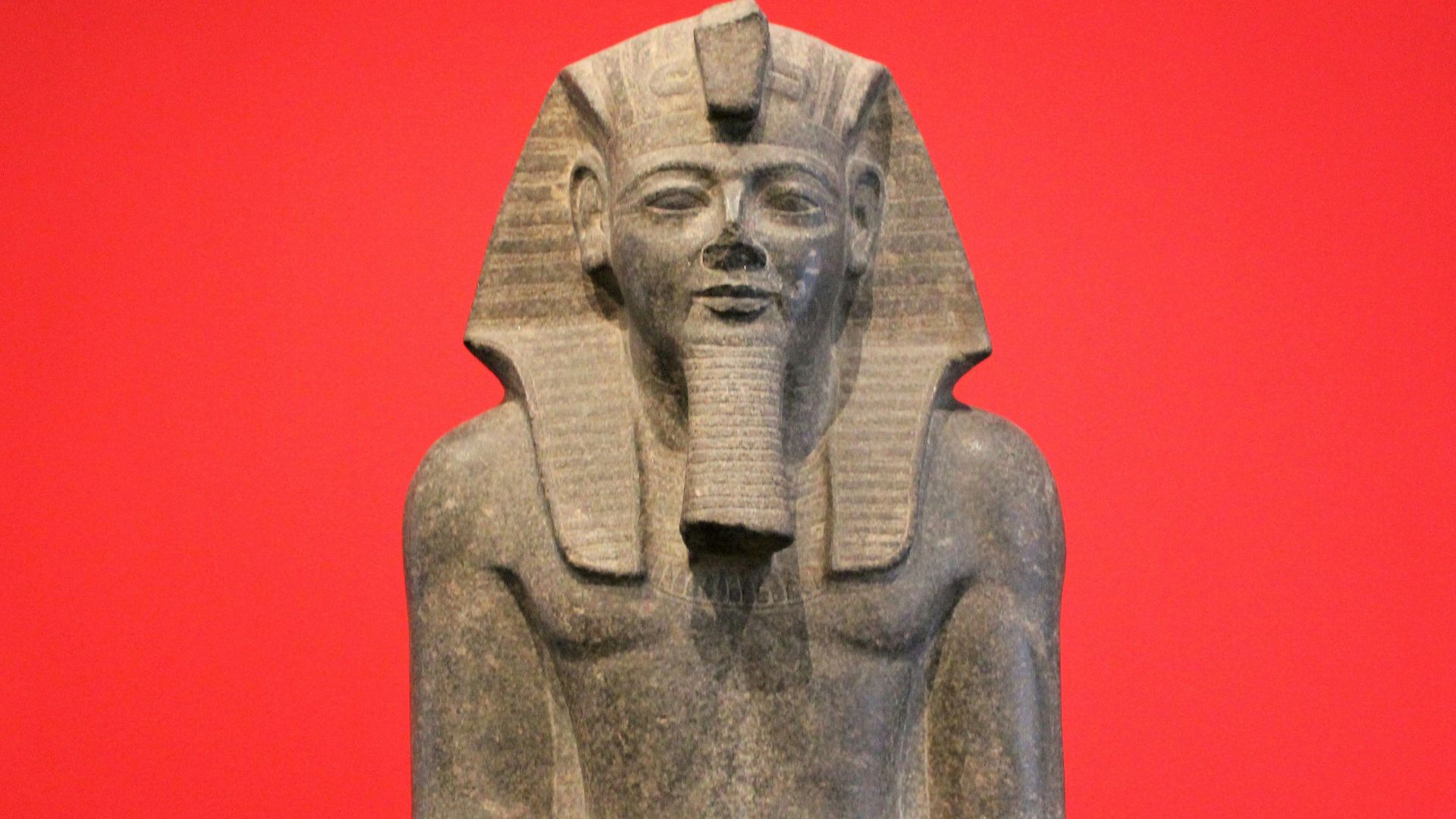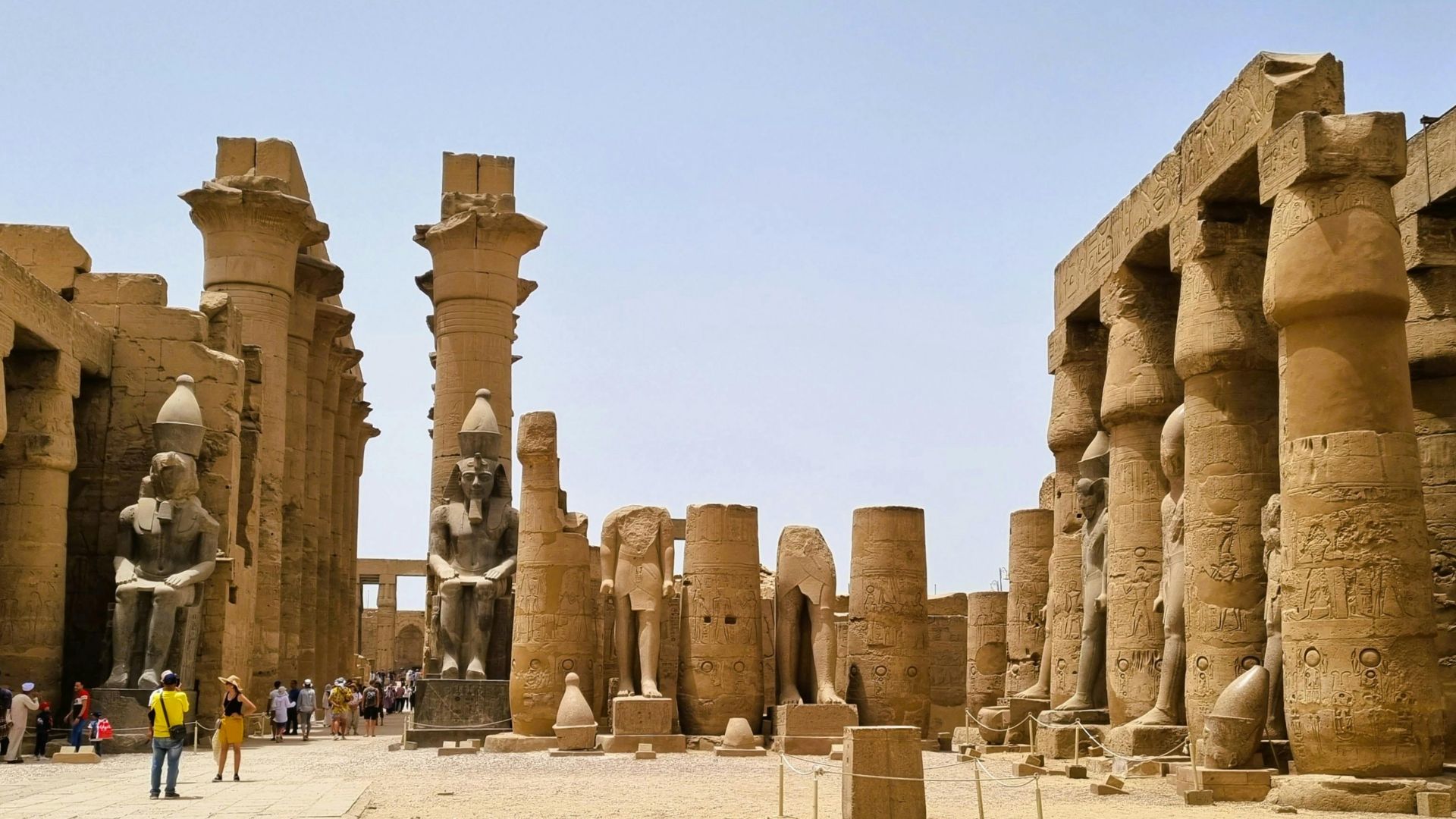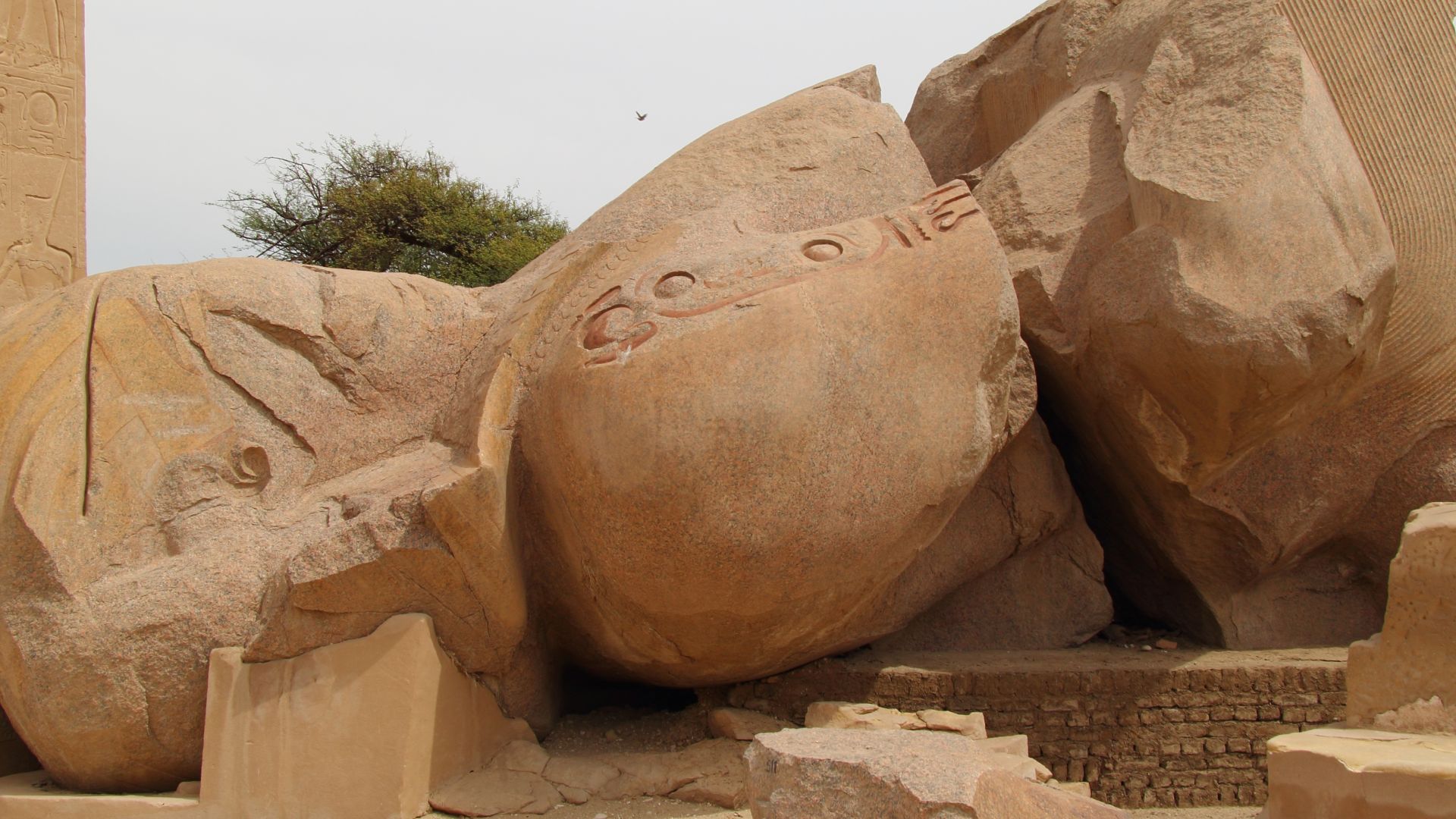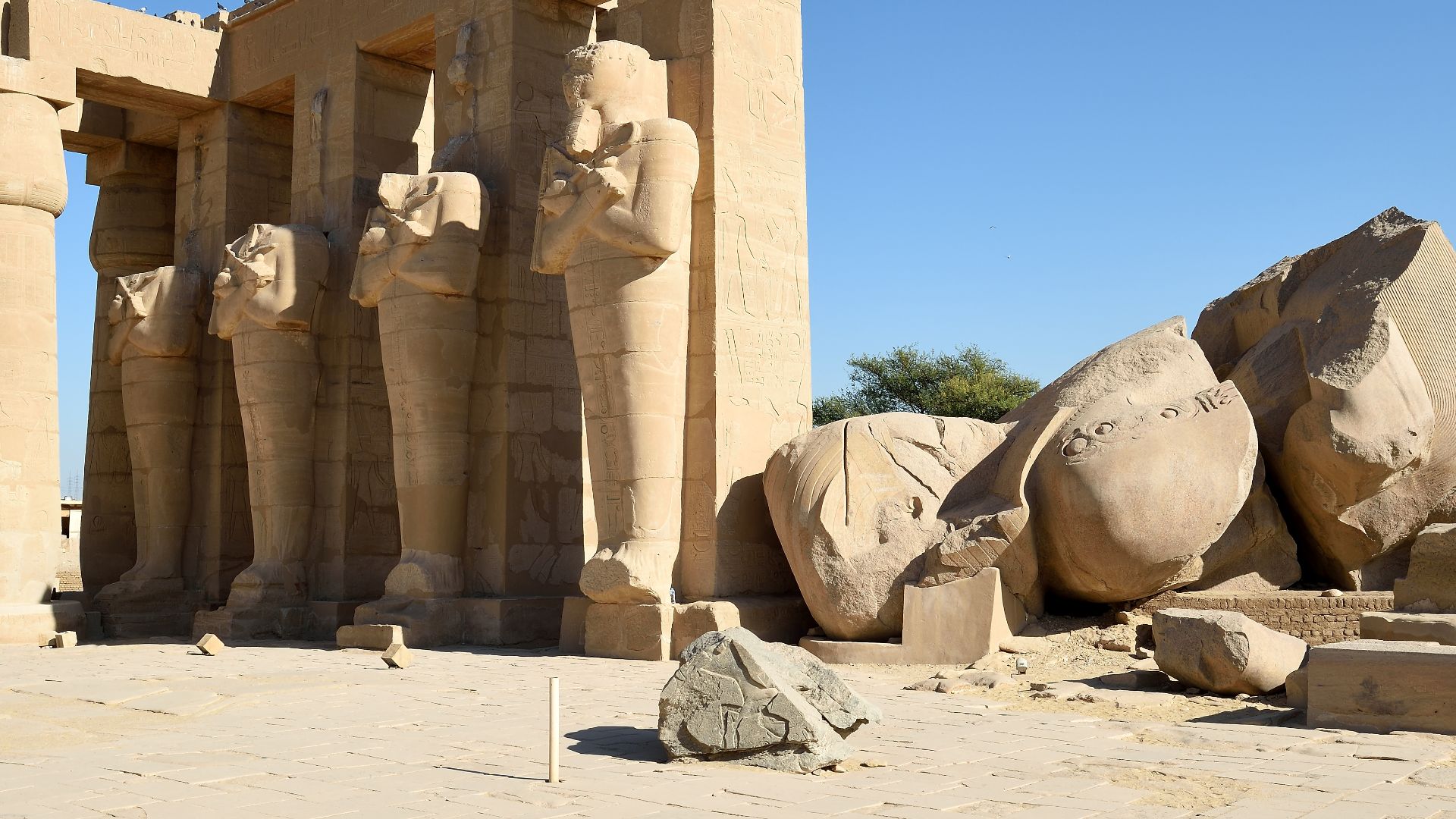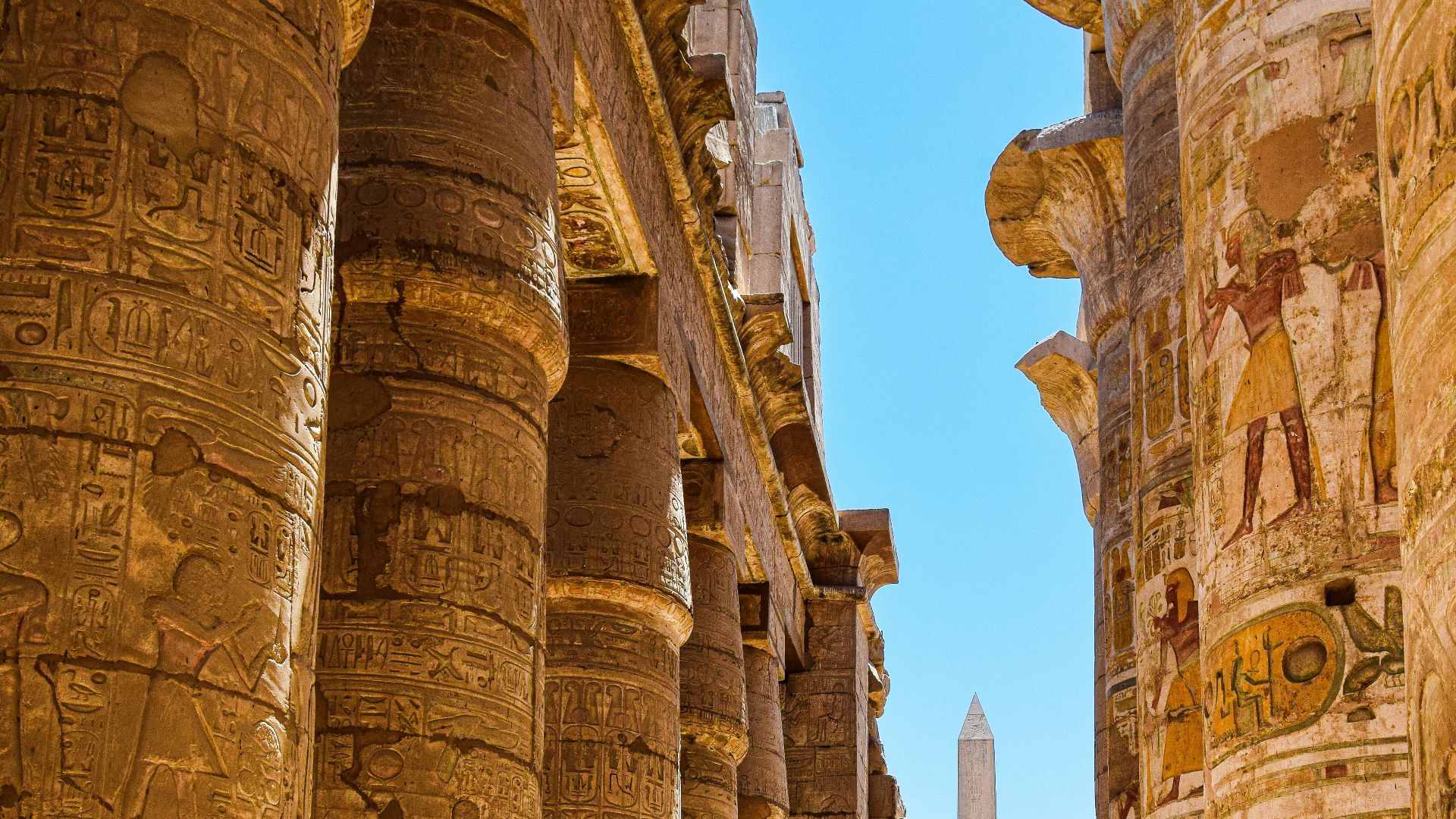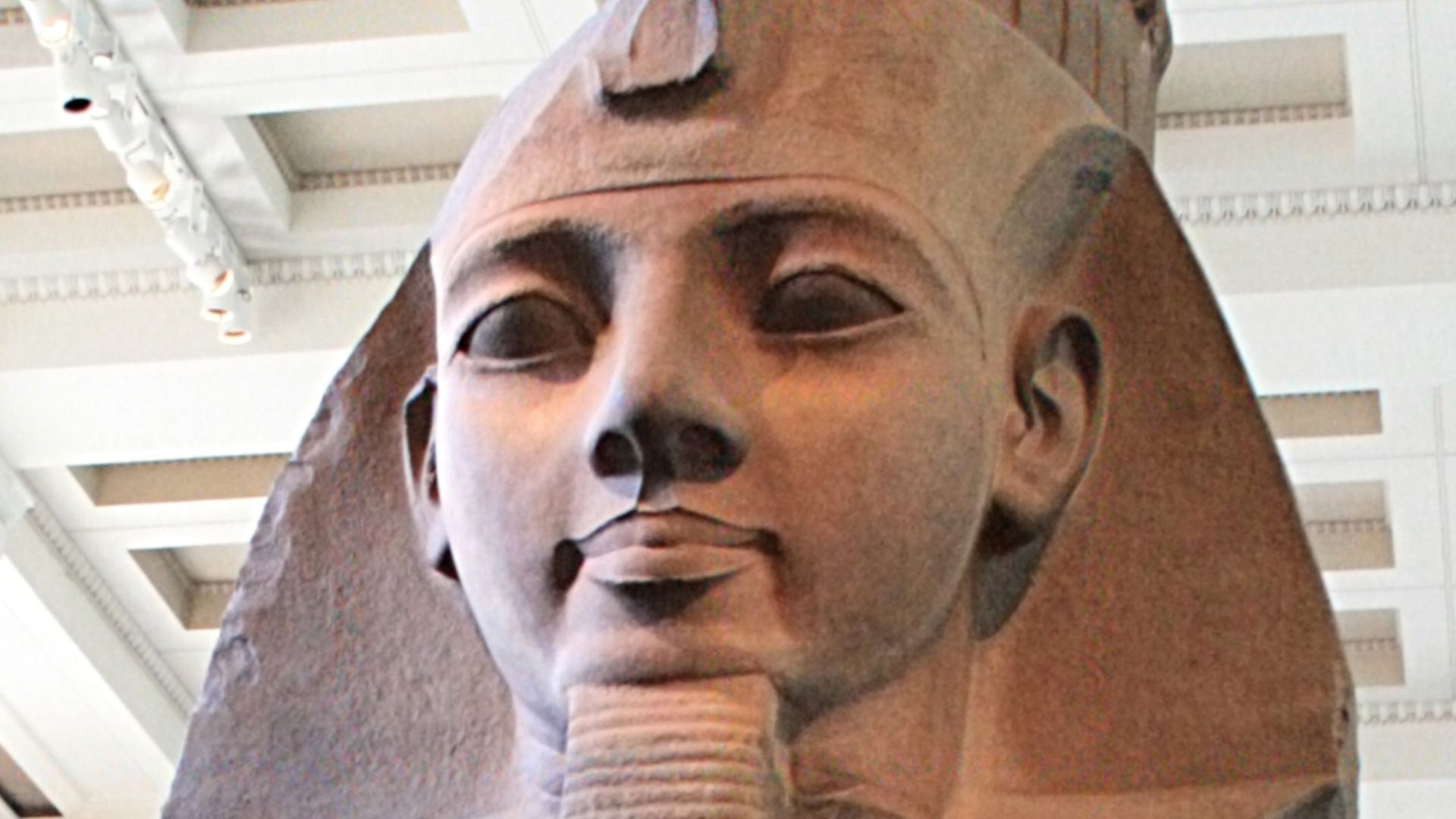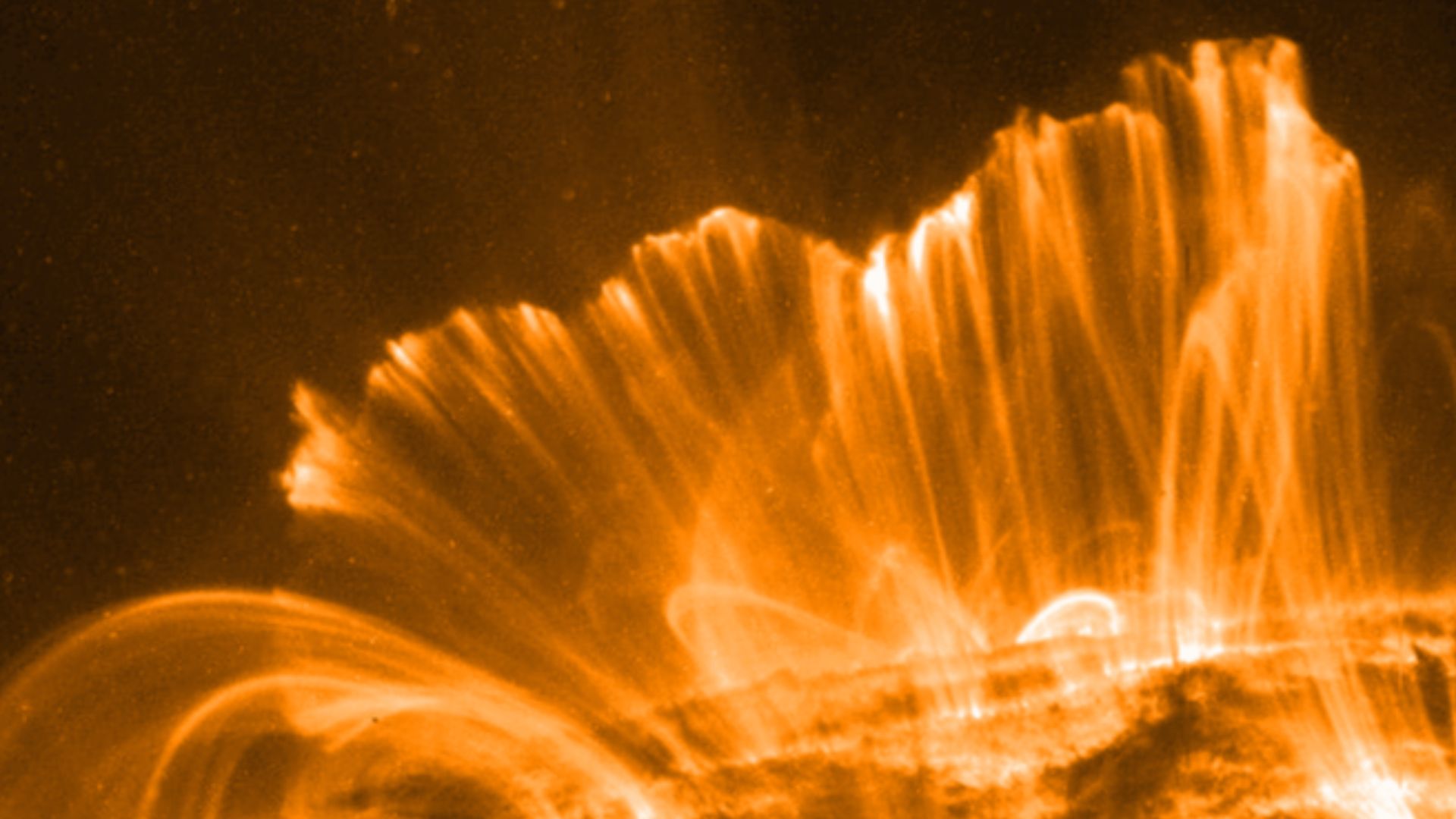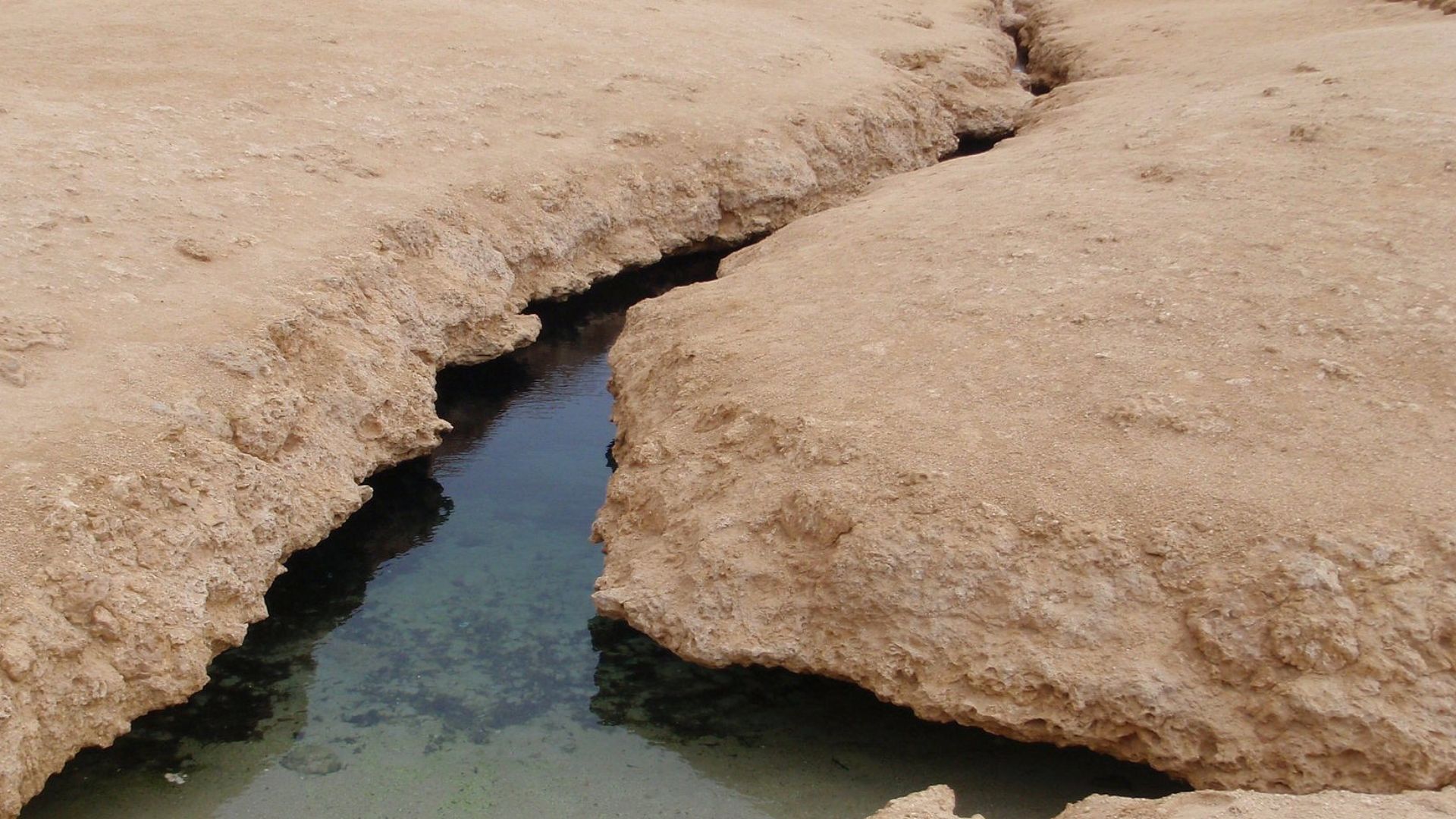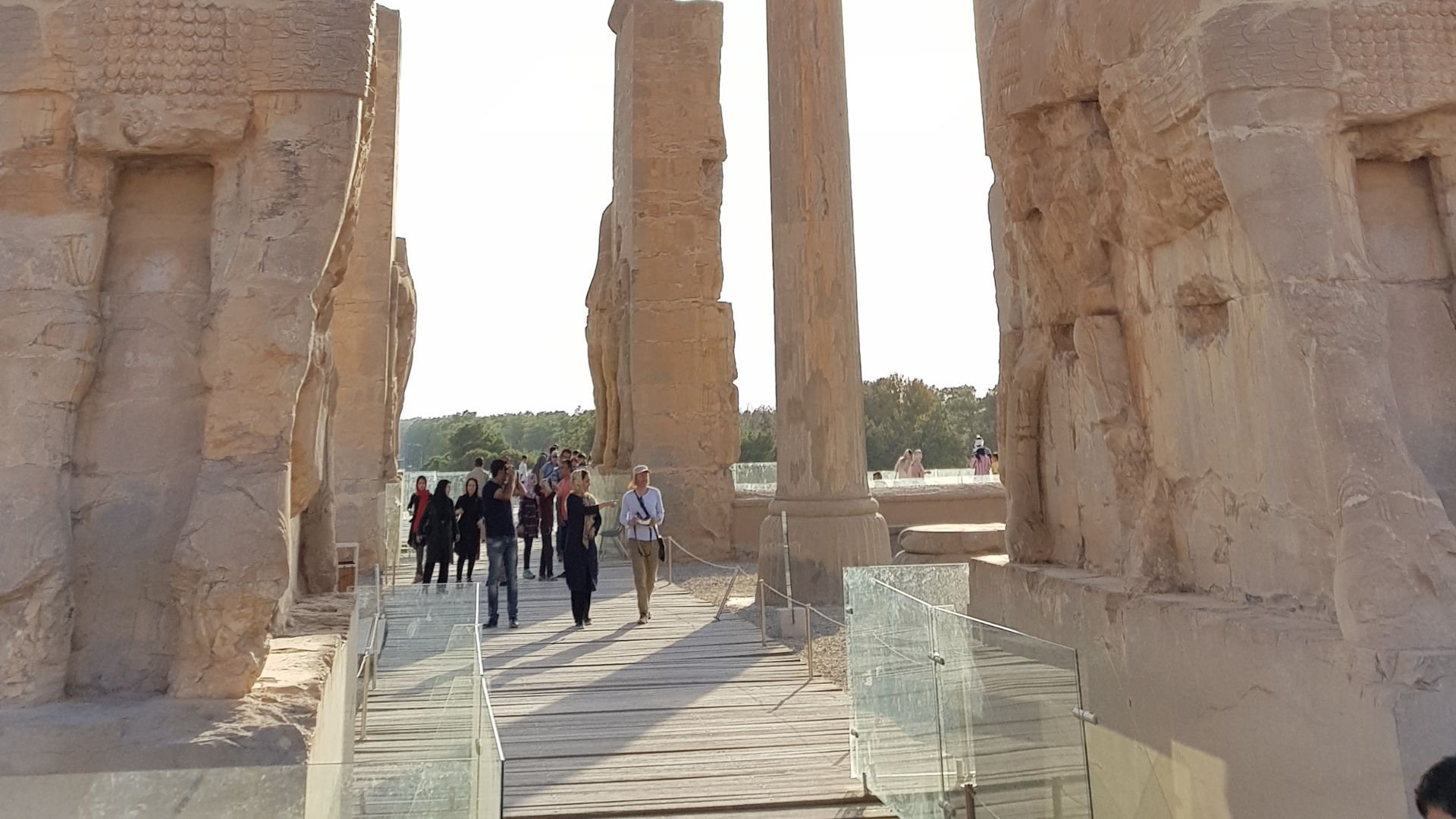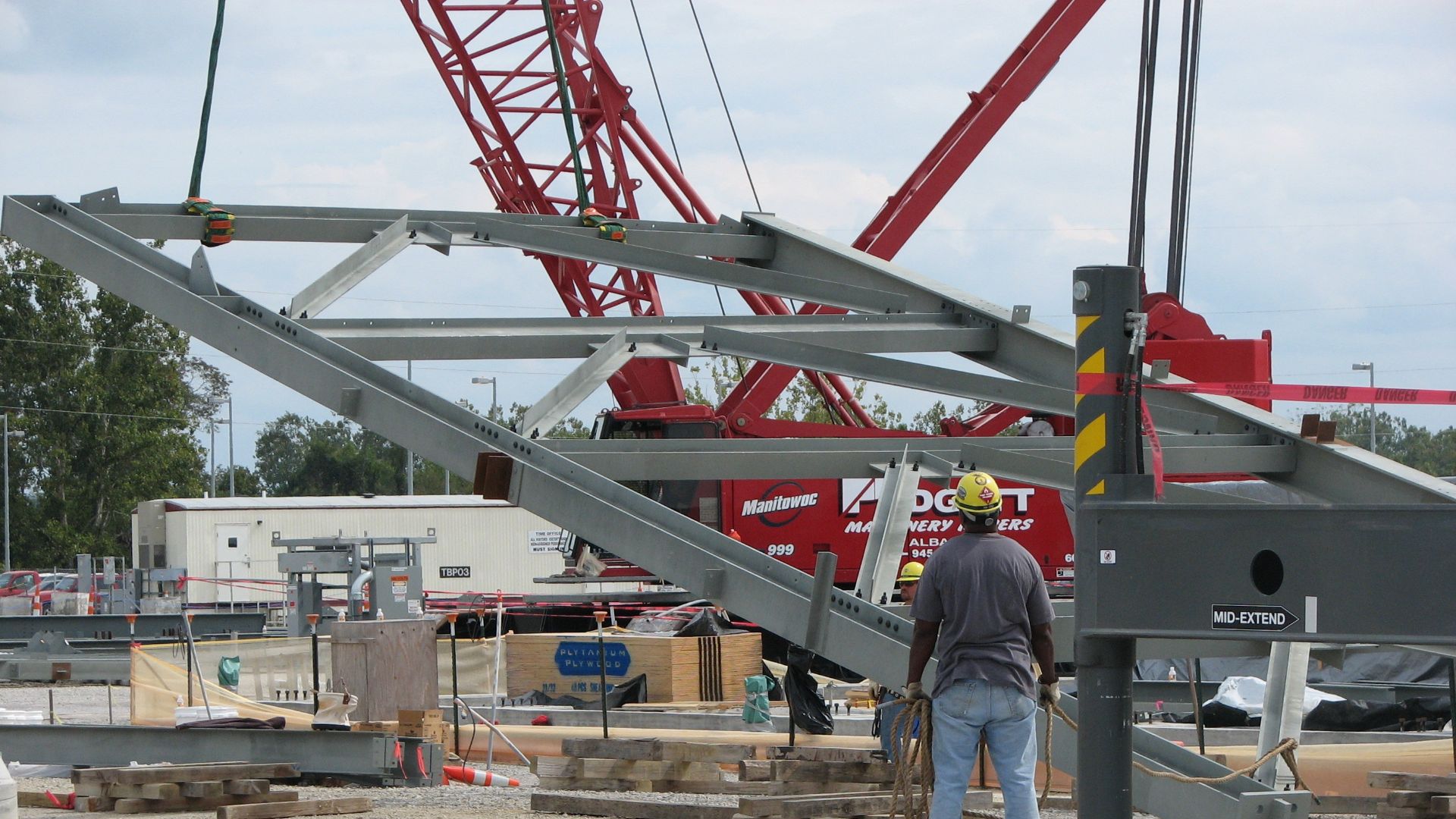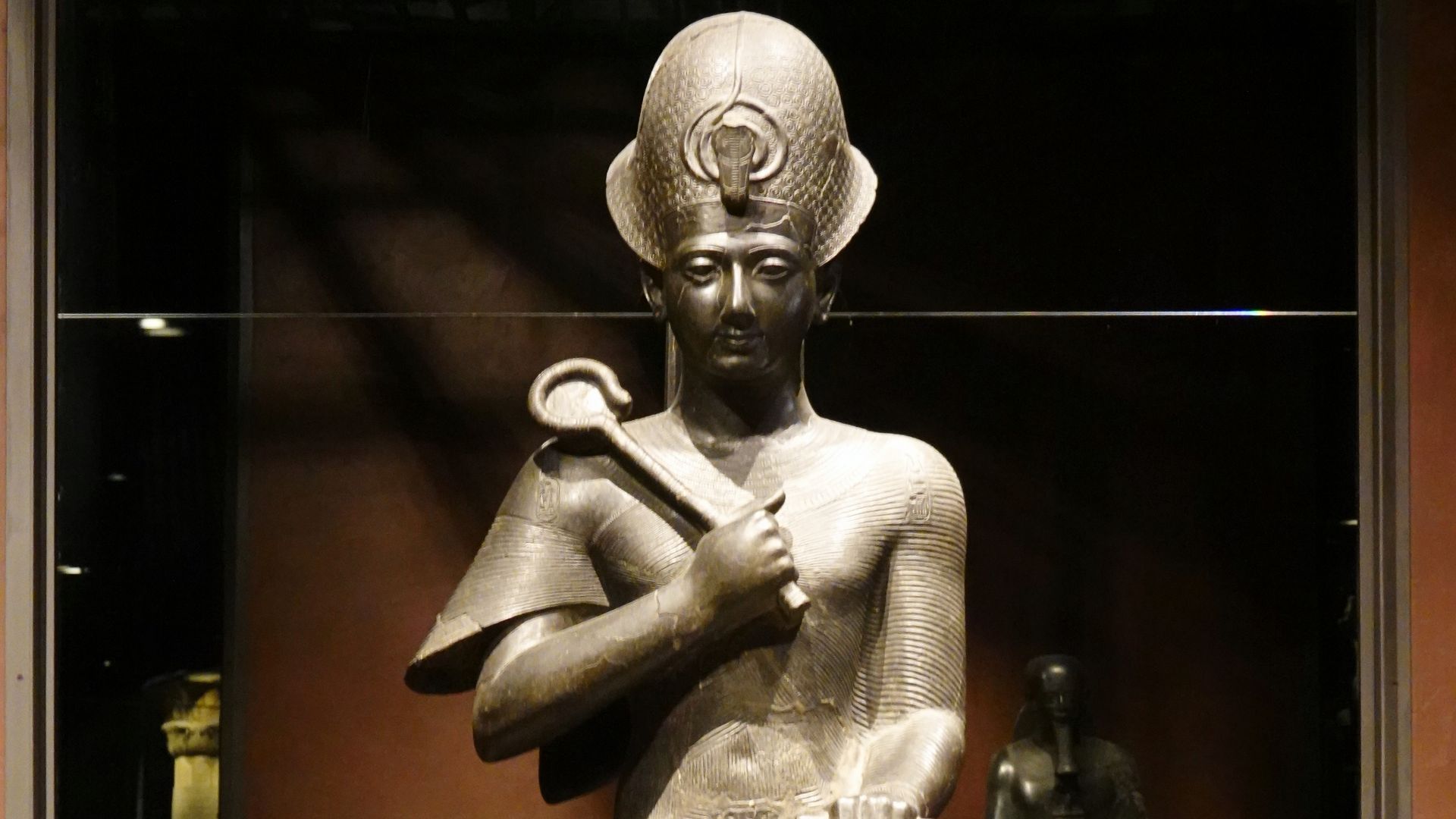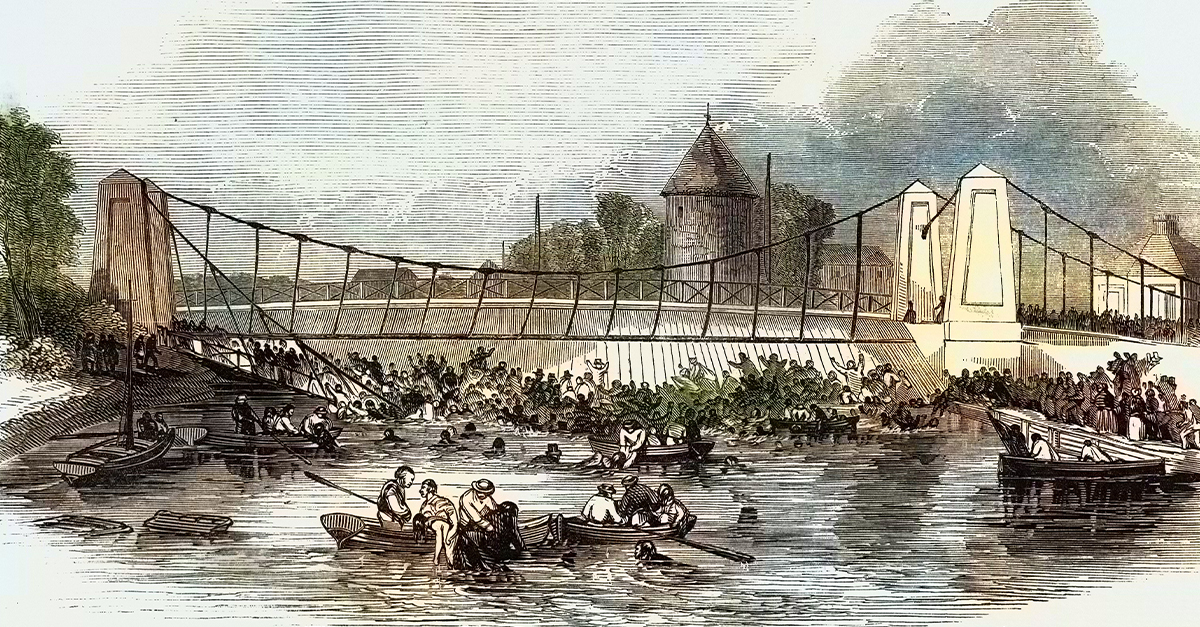The Mystery Behind A Massive Statue
The Ramesseum, once the grand temple of Ramesses II, now holds the broken remains of a statue that defies explanation even in pieces. What kind of force can shatter 1,000 tons of carved stone?
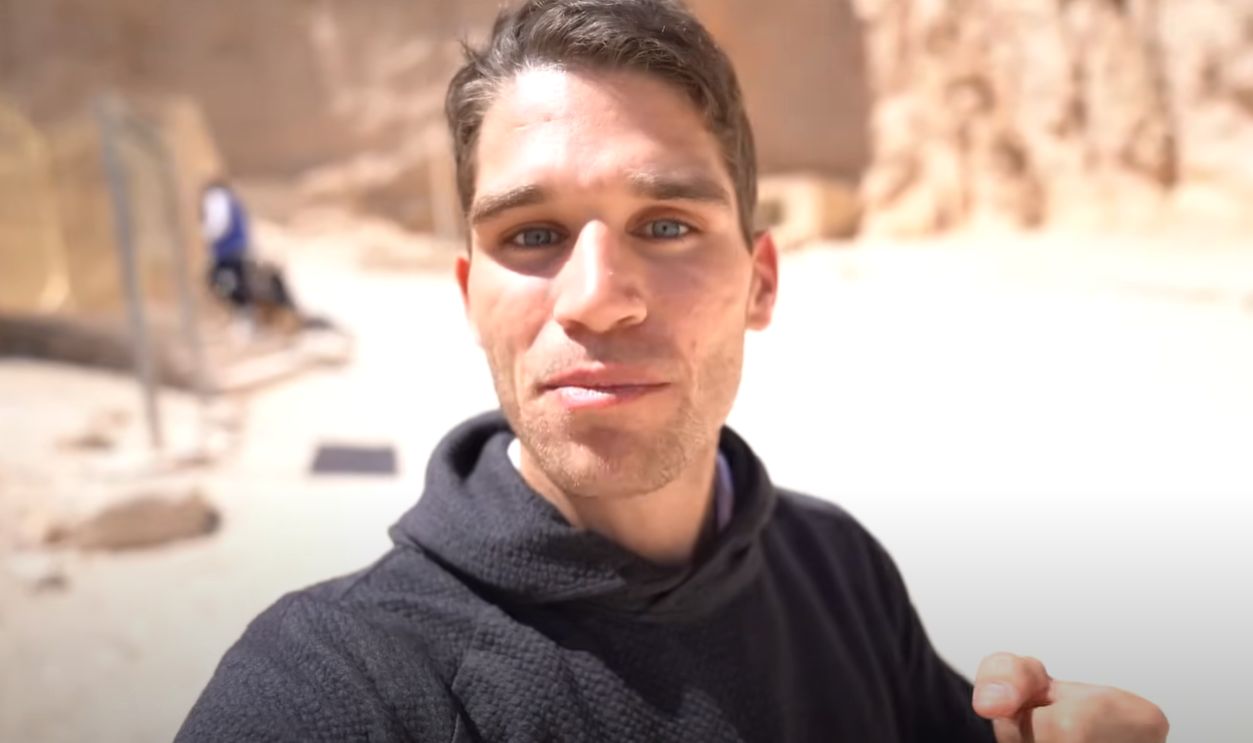
The Shadow Of Giants
In the golden dust of Luxor, Egypt, the Ramesseum was a grand tribute to Ramesses II but now slouches in ruins. Even in its shattered state, it carries the air of something that was never meant to fall.
The House Of Millions Of Years
Ramesses II didn't think small. His ego was chiseled in stone, literally. He called this place "The House of Millions of Years,"—which is his way of saying "My Forever Palace". But what remains now feels eerily abandoned, like a superstar's mansion long after the lights went out.
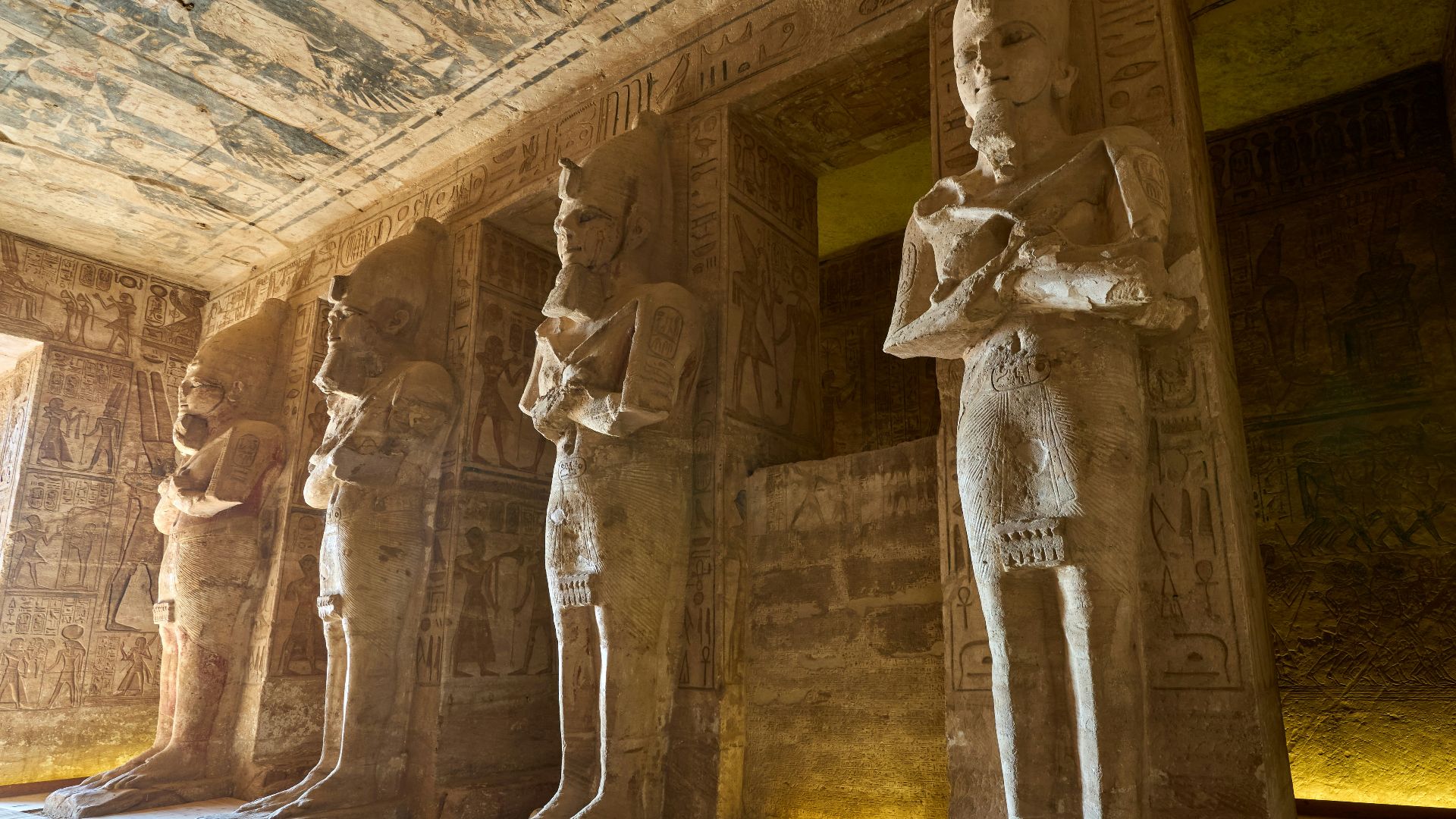 Dmitrii Zhodzishskii, Unsplash
Dmitrii Zhodzishskii, Unsplash
The King Who Tried To Beat Time
Every wall and statue feels like a dare aimed directly at the centuries ahead. The Egyptian King wasn't just building for the gods. He challenged time to try to erase him. And time accepted. But the echoes of that clash are still ringing in the dust.
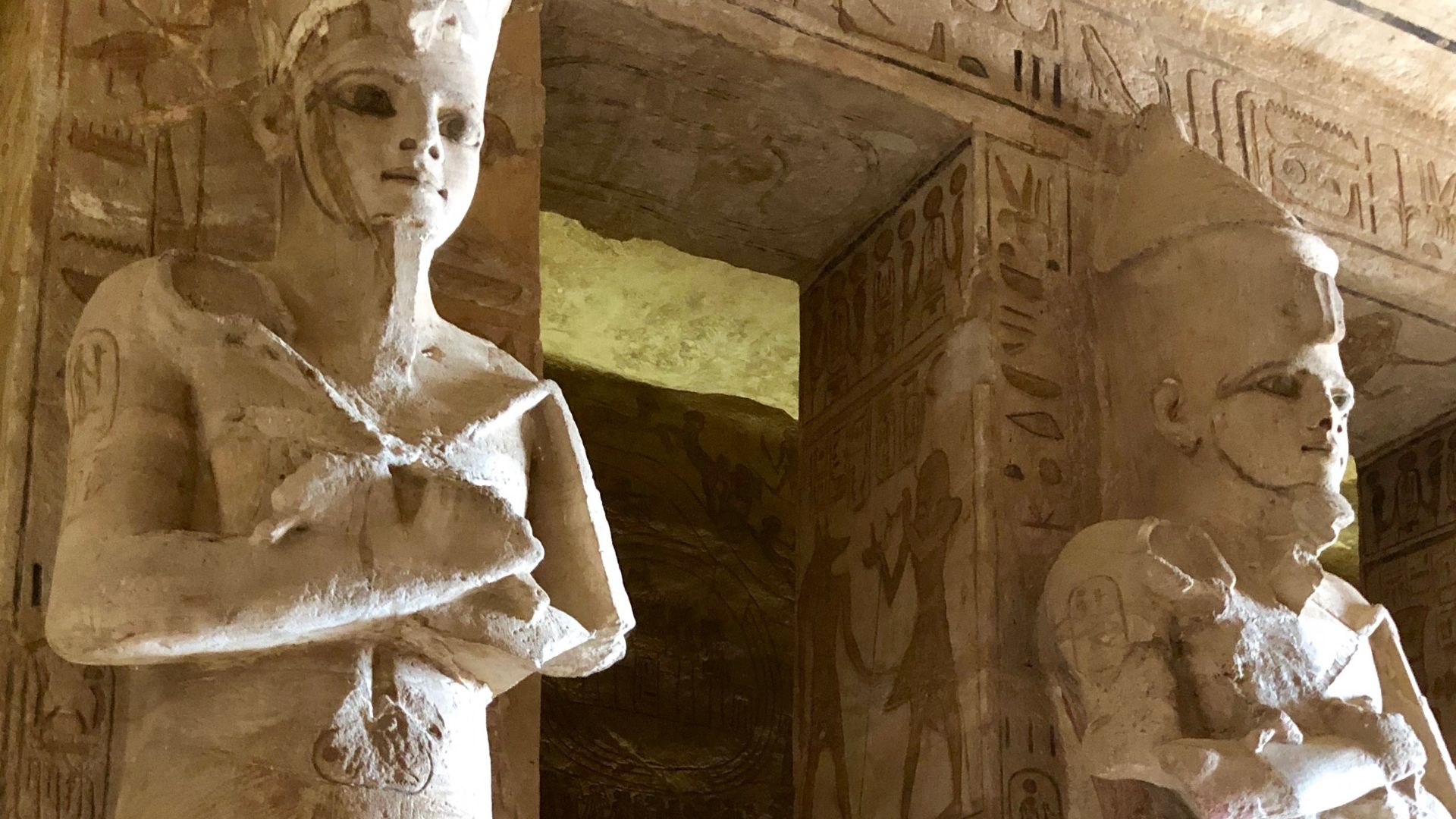 Warren LeMay from Cullowhee, NC, United States, Wikimedia Commons
Warren LeMay from Cullowhee, NC, United States, Wikimedia Commons
Egypt's Ultimate Builder
Kings came and went, but Ramesses carved himself into the bedrock of history. Builder and warrior, he commissioned more statues of himself than most kings built bricks. His reign lasted 66 years. That's two generations of citizens who knew no other ruler.
From Glory To Ruin
There's a strange poetry in watching glory crumble. The Ramesseum was once a temple of light, booming with chants and sacred fire. Now, it's haunted by broken pillars and a sky that peeks through where the roof used to be. Earthquakes and looters tore it down piece by piece.
The Temple Withdrew
Anyone who stands among the ruins would feel it. The Ramesseum doesn't look destroyed. It feels withdrawn or pulled inward. As if something once vibrant chose to retreat rather than die. Whatever happened here was a bit abnormal.
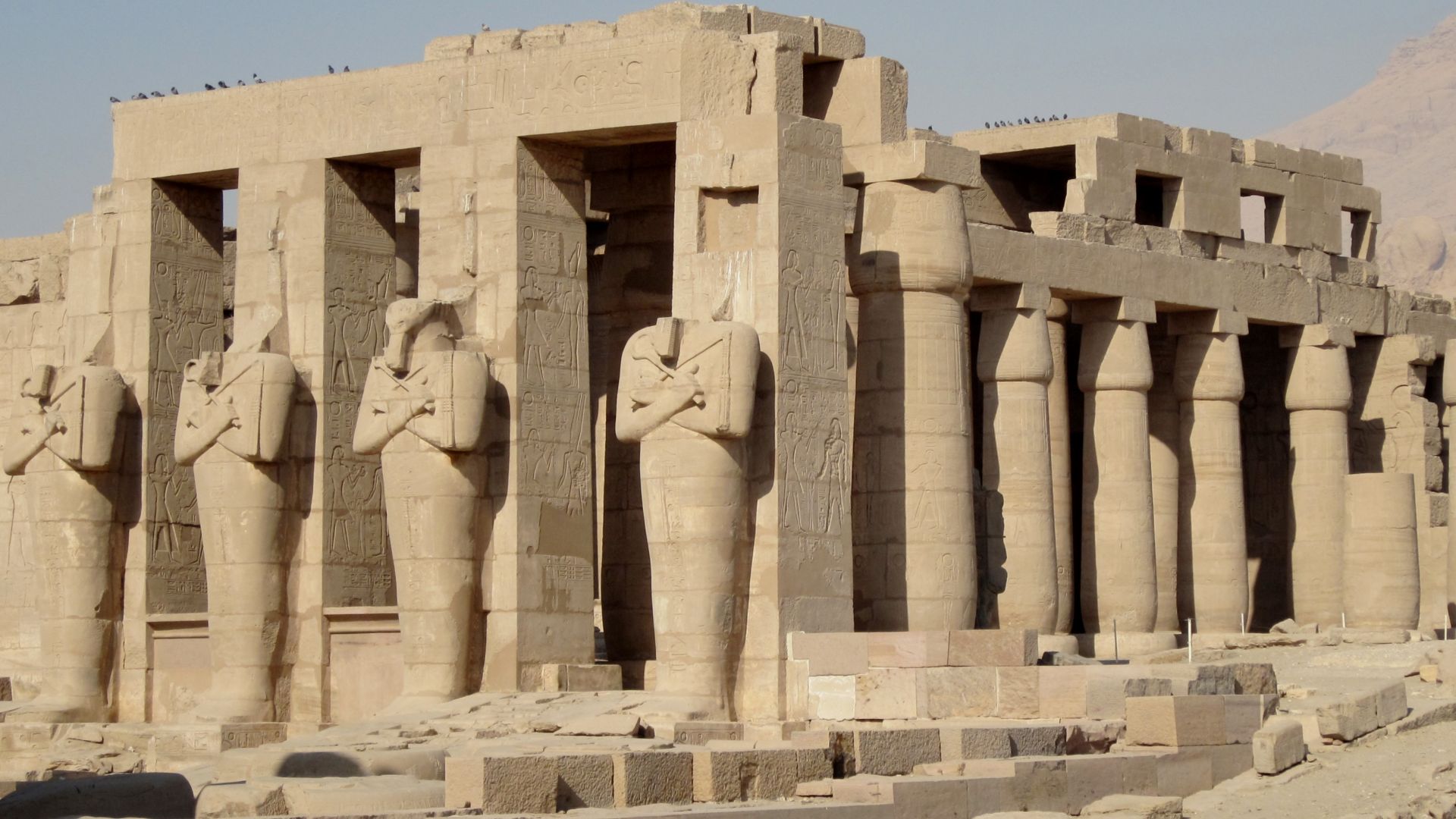 Olaf Tausch, Wikimedia Commons
Olaf Tausch, Wikimedia Commons
Behold The Broken Titan
There it lies, face down in the dirt. Once the centerpiece of the Ramesseum, the colossal statue of Ramesses II now rests in massive, scattered chunks. The torso alone could flatten a truck and some pieces are forever gone.
Cracked By Time
The statue broke into scattered pieces. Feet, knees, torso, head—all spread across the courtyard like a wreckage site frozen in time. This wasn't a topple. It was a takedown. And here's where the theories go wild. Was it an earthquake or a deliberate demolition?
The Myth Begins
The moment Ramesses' colossal image hit the ground may have marked the death of a monument, but it also birthed the legend. Before it fell, it was a marvel. After that, it became a warning and a haunting sign.
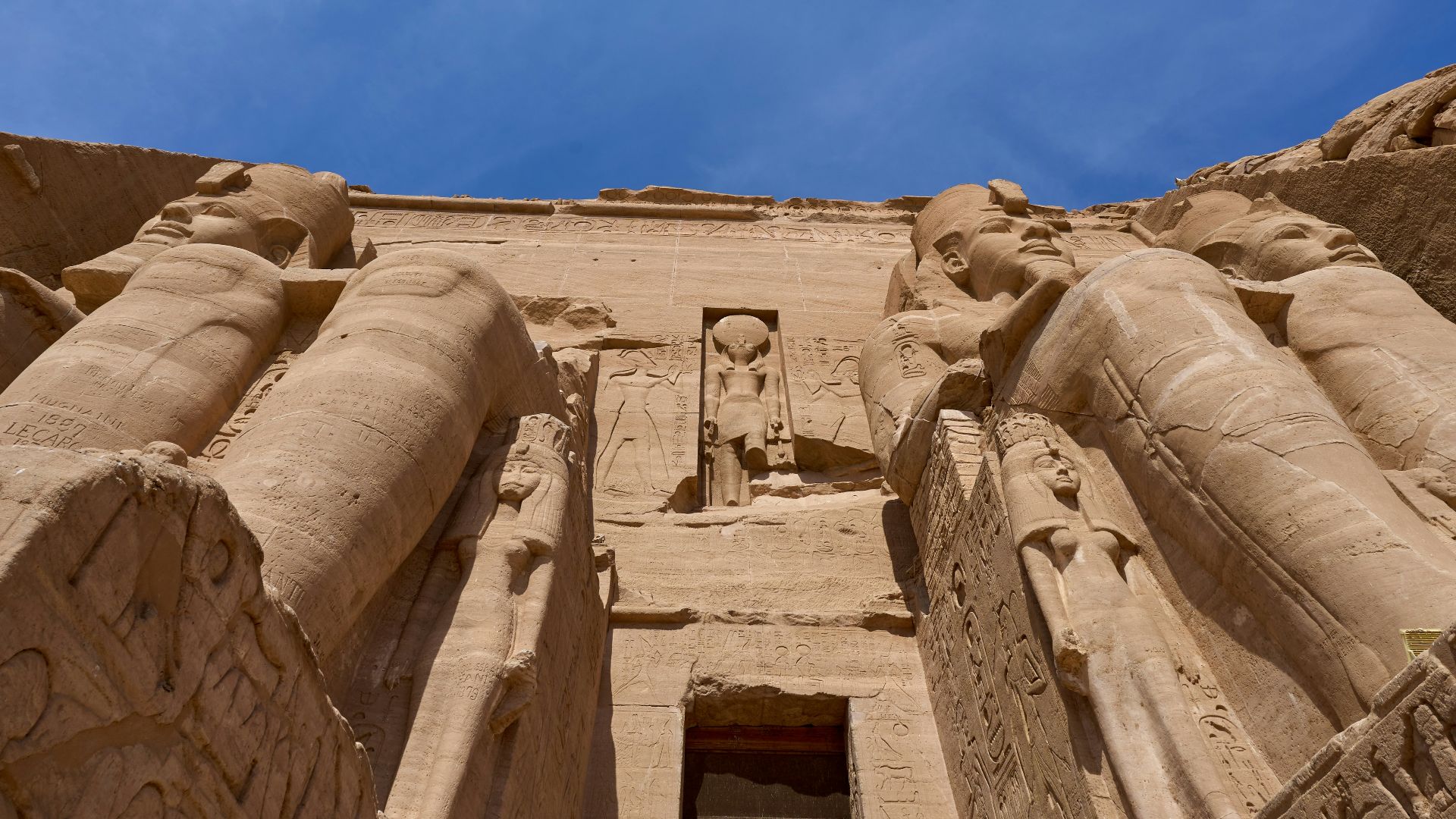 Dmitrii Zhodzishskii, Unsplash
Dmitrii Zhodzishskii, Unsplash
It Could Be An Engineering Feat Or Lost Technology
Researchers estimate that the statue weighs about 1,000 tons. That's a small mountain. And it wasn't carved on-site. The granite came from Aswan, over 100 miles away, without forklifts or trucks. The manpower and the mysterious determination of this civilization made it happen.
Labor And Skill In Ancient Egypt
Behind the grandeur was sweat and precision. The Ramesseum was built by thousands of people, chipping away under the sun. They trusted a vision bigger than themselves. These weren't nameless slaves. They were skilled artisans and engineers.
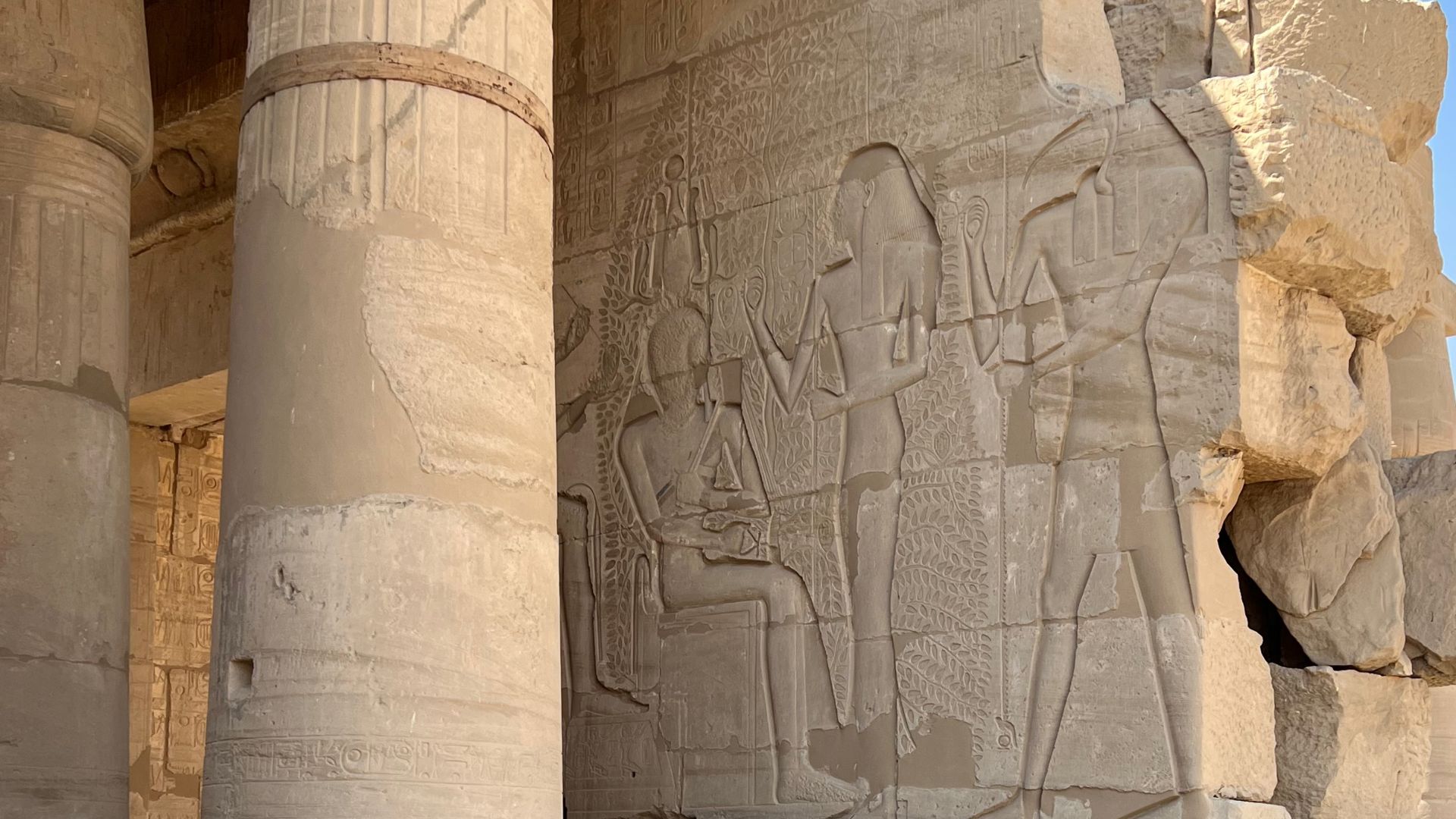 Onceinawhile, Wikimedia Commons
Onceinawhile, Wikimedia Commons
How Did They Move It Here?
Some say barges were used. Others suggest sleds and wet sand. Then there are the fringe thinkers who throw in unsubstantiated sound technology or anti-gravity pulses. But the real kicker is that however they did it, they did it over and over.
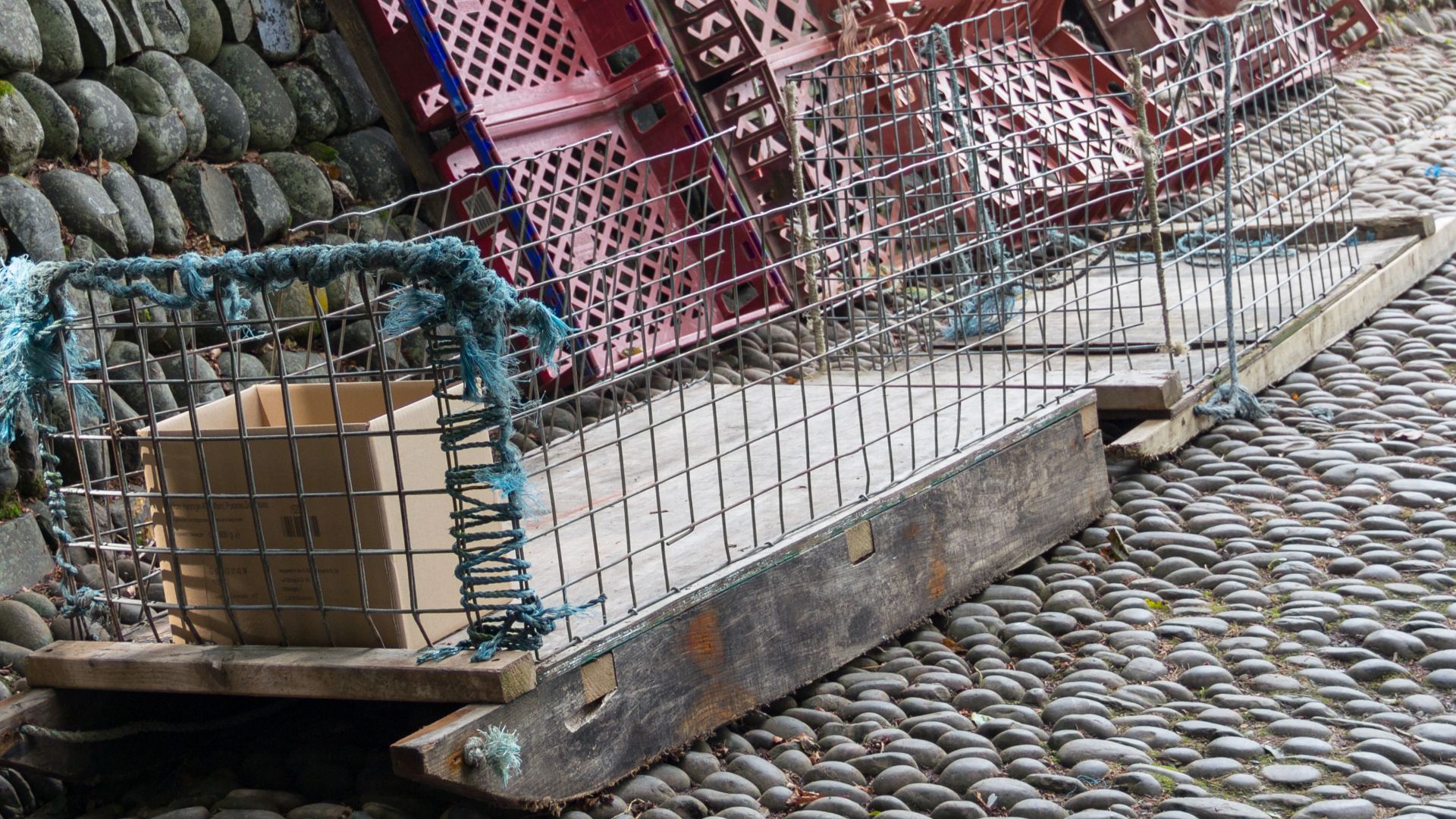 Dietmar Rabich, Wikimedia Commons
Dietmar Rabich, Wikimedia Commons
Reconstructing The Pose Of The Giant
The colossus with its eyes fixed on eternity and feet planted like roots in the sand definitely looked grand. No one is completely sure of its original pose, but everyone agrees that it was meant to dominate. Archaeologists have pieced together sketches and simulations to align fragments like puzzle pieces.
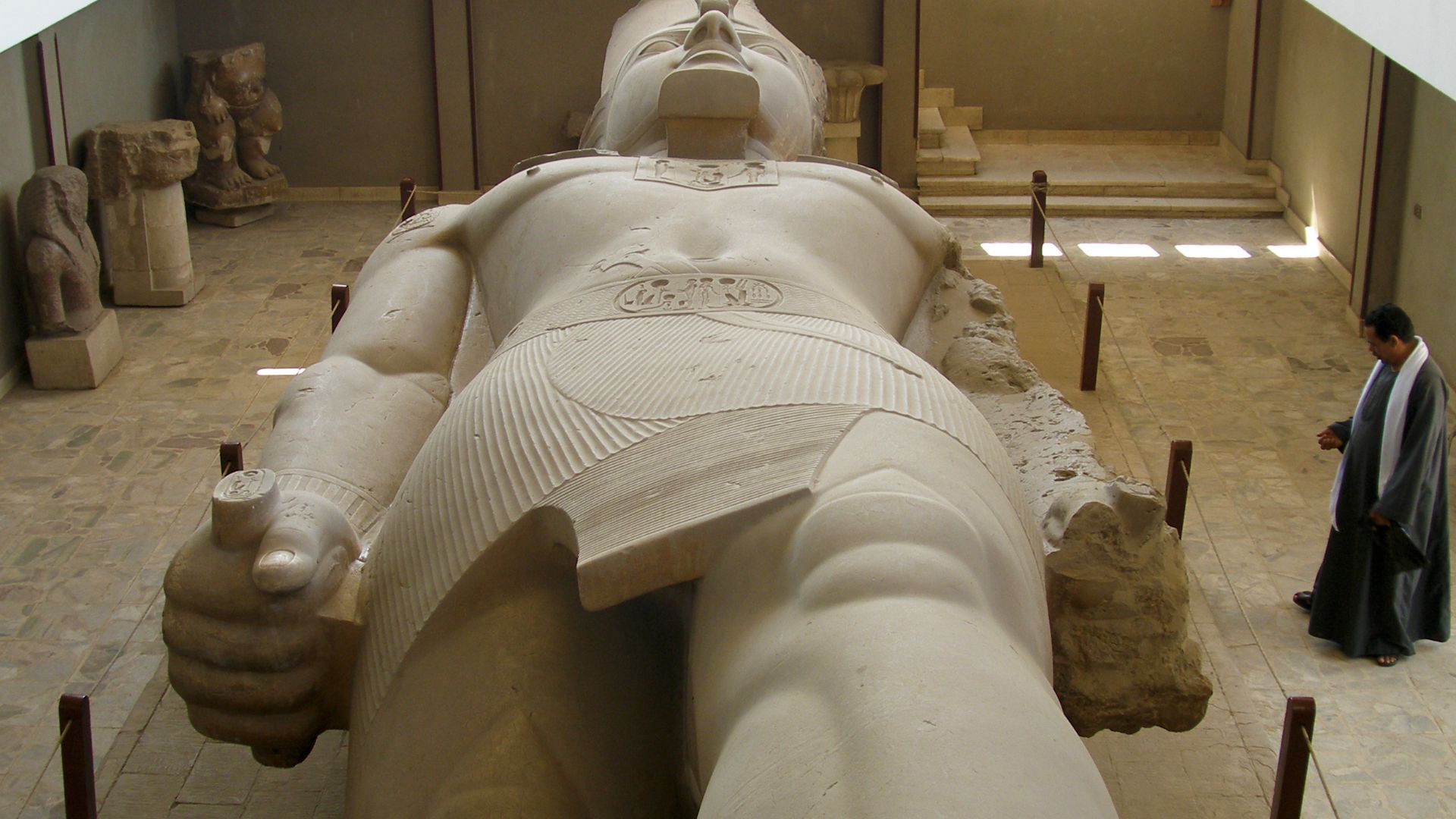 Vyacheslav Argenberg, Wikimedia Commons
Vyacheslav Argenberg, Wikimedia Commons
Melted Monuments
Stone isn't supposed to melt. But the Ramesseum plays by its own book. On the rear of the shattered colossus, the granite looks scorched. It's burned in ways no ordinary weathering can explain. Some suggest these are caused by plasma storms, yet there’s no evidence.
The Plasma Event Hypothesis
Some researchers believe what we're seeing isn't erosion or time. It's the fingerprint of a plasma discharge. Think solar flare, but angrier. An explosion from the sky that lashed the surface with unimaginable heat. It's not mainstream, but it's not completely dismissed, either.
The Reason Behind This Kind Of Damage?
You can't ignore the possibility that some kind of energy might've played a role here. Some ancient texts whisper of "divine fire" and "sky serpents". However, for too long, archaeologists believed that earthquakes were the only accepted explanation.
The Ramesseum Could Have Been Targeted
Thebes has seen its fair share of wrath. Earthquakes, floods, riots, and looting. But what happened at the Ramesseum doesn't match the usual script. Some people propose a magnetic anomaly. Then there's the eerie idea that the site itself drew the chaos—an attractor for destruction because of what it represented.
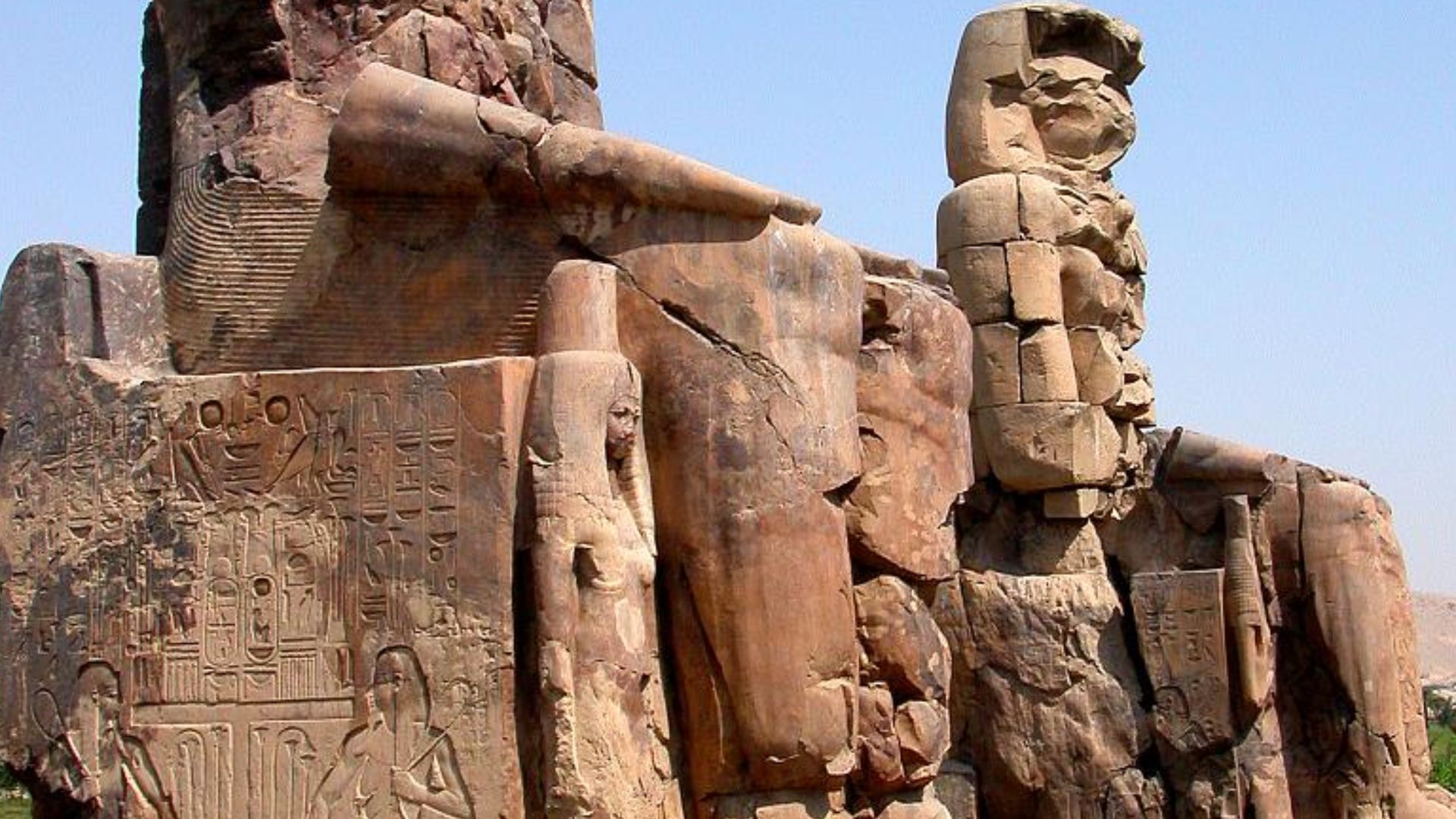 Dennis G. Jarvis, Wikimedia Commons
Dennis G. Jarvis, Wikimedia Commons
Peeling Granite And Strange Erosions
Granite flakes over time but not in that way. However, in the temple, the stone surfaces are peeling in thin layers as if the skin of the monument blistered and slid off. Some geologists scratch their heads because this doesn’t look like usual erosion.
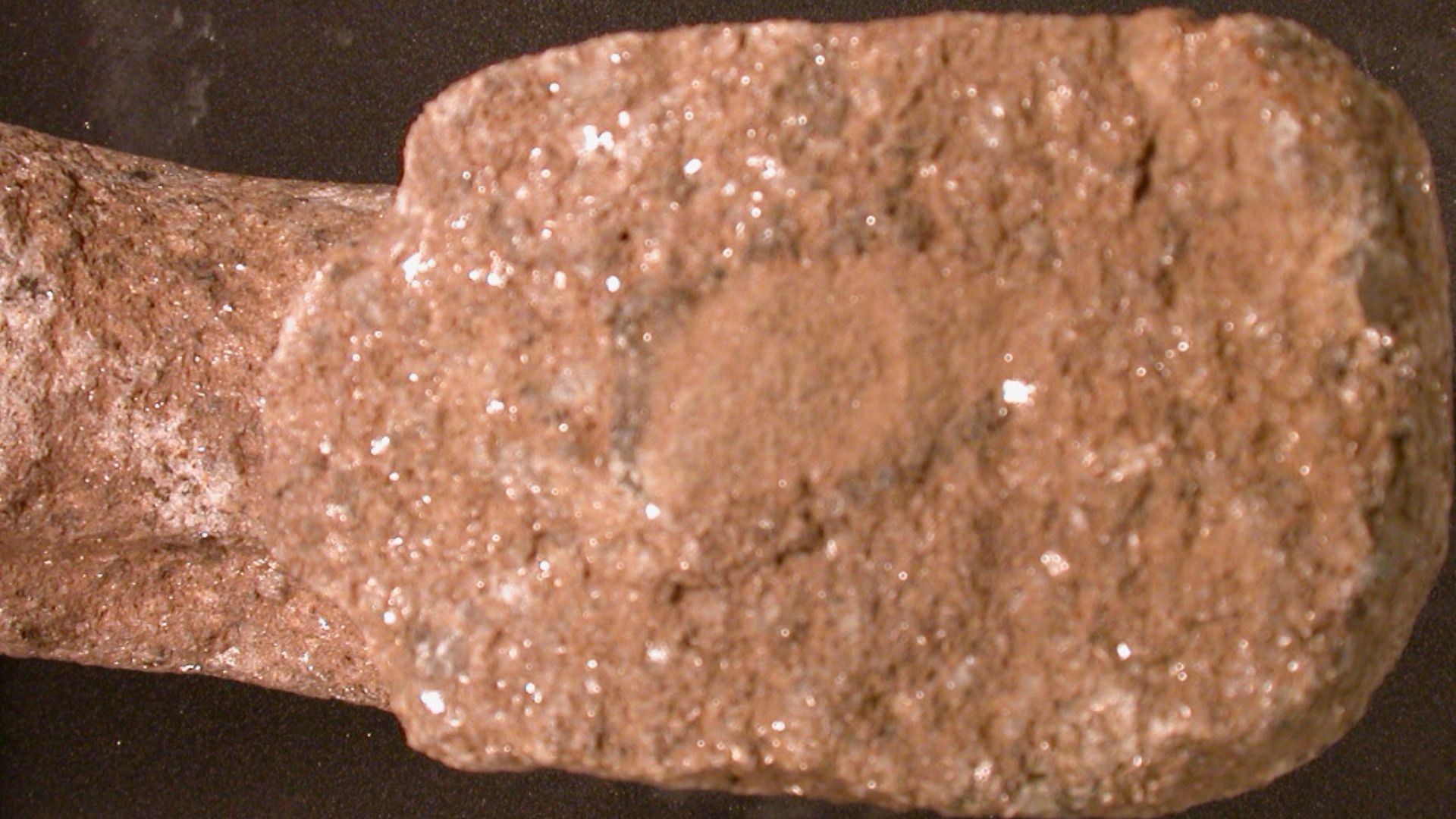 Royal Institution of Cornwall, Anna Tyacke, 2010-07-03 22:54:28, Wikimedia Commons
Royal Institution of Cornwall, Anna Tyacke, 2010-07-03 22:54:28, Wikimedia Commons
Fake Restorations
Not all scars are ancient. Some were made by well-meaning archaeologists with cement and a plan. In parts of the statue, it's obvious: chunky filler and odd seams that don't quite match. The repairs look more cosmetic than corrective.
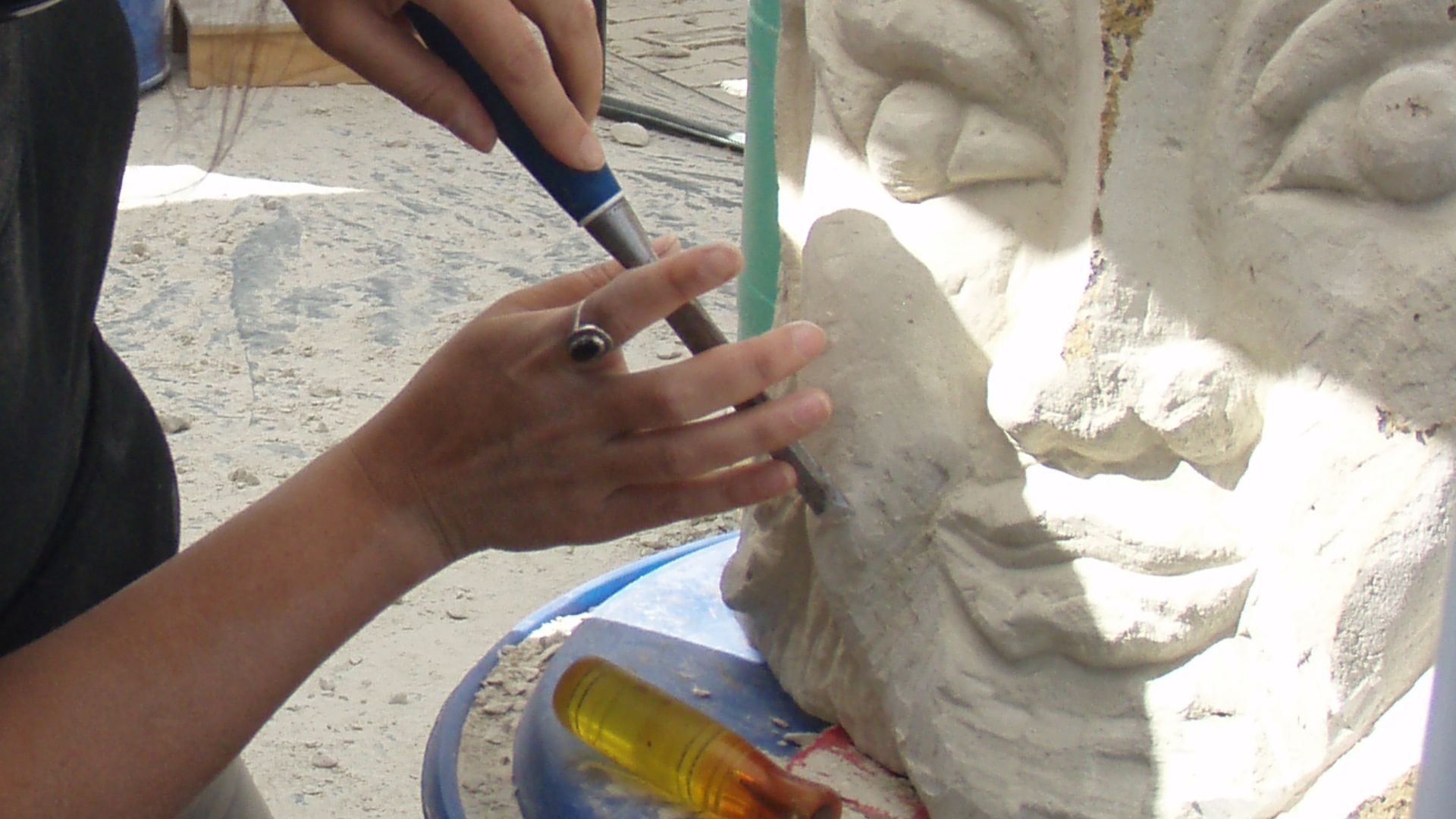 Robert Engberg, Wikimedia Commons
Robert Engberg, Wikimedia Commons
Machine Work Is A Possibility
On one piece of the statue, you see grooves. They're uniform and evenly spaced, which suggests they were not the product of chisels. Too symmetrical to be human error and too smooth to be ancient wear. People still argue about what made them.
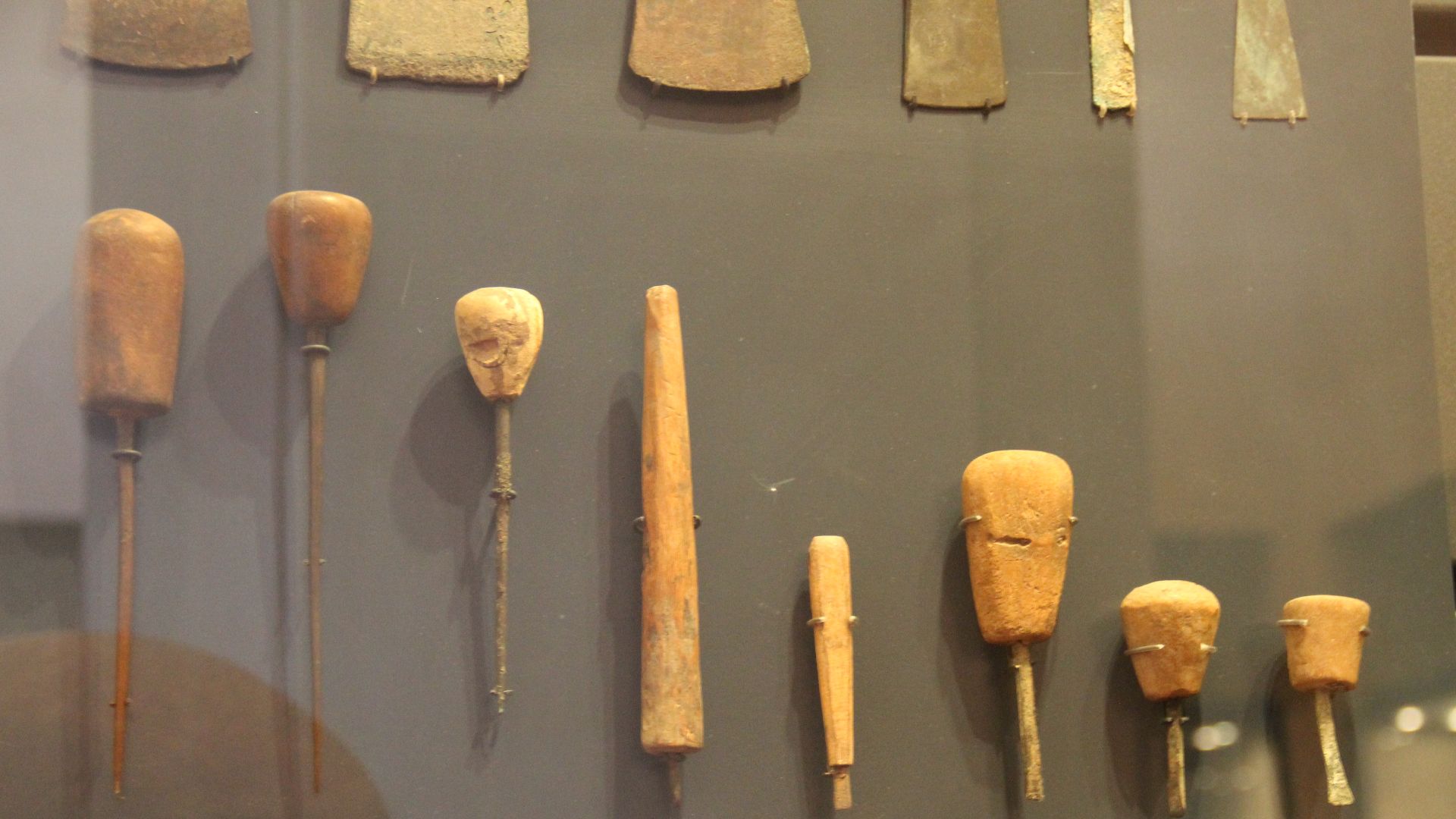 Gary Todd from Xinzheng, China, Wikimedia Commons
Gary Todd from Xinzheng, China, Wikimedia Commons
The Granite Remembered Something We Forgot
Granite doesn't have memory. But the scars on the Ramesseum's ruins don't look accidental. They look imprinted as if the stone was burned in a moment too intense to fade. But the granite keeps its secrets. And if it does remember something, it's not ready to forgive.
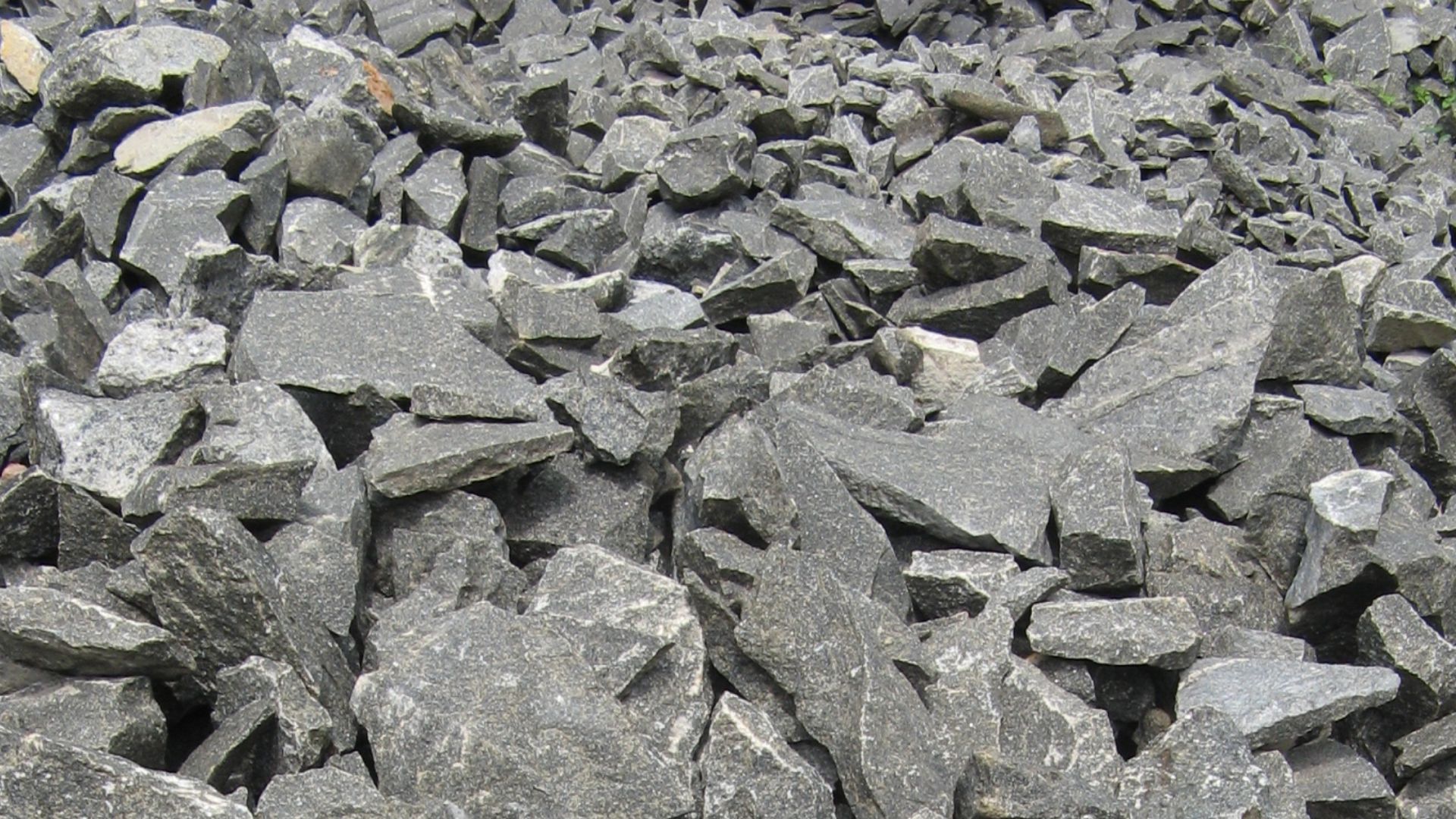 Rameshng at Malayalam Wikipedia, Wikimedia Commons
Rameshng at Malayalam Wikipedia, Wikimedia Commons
The Machinery Hypothesis
It sounds crazy until you see the grooves. The kind of lines that could be left behind by spinning and calibrated machines. Not sculptors with stone hammers. Proponents of the machinery hypothesis don't claim aliens or science fiction. They point to possibility.
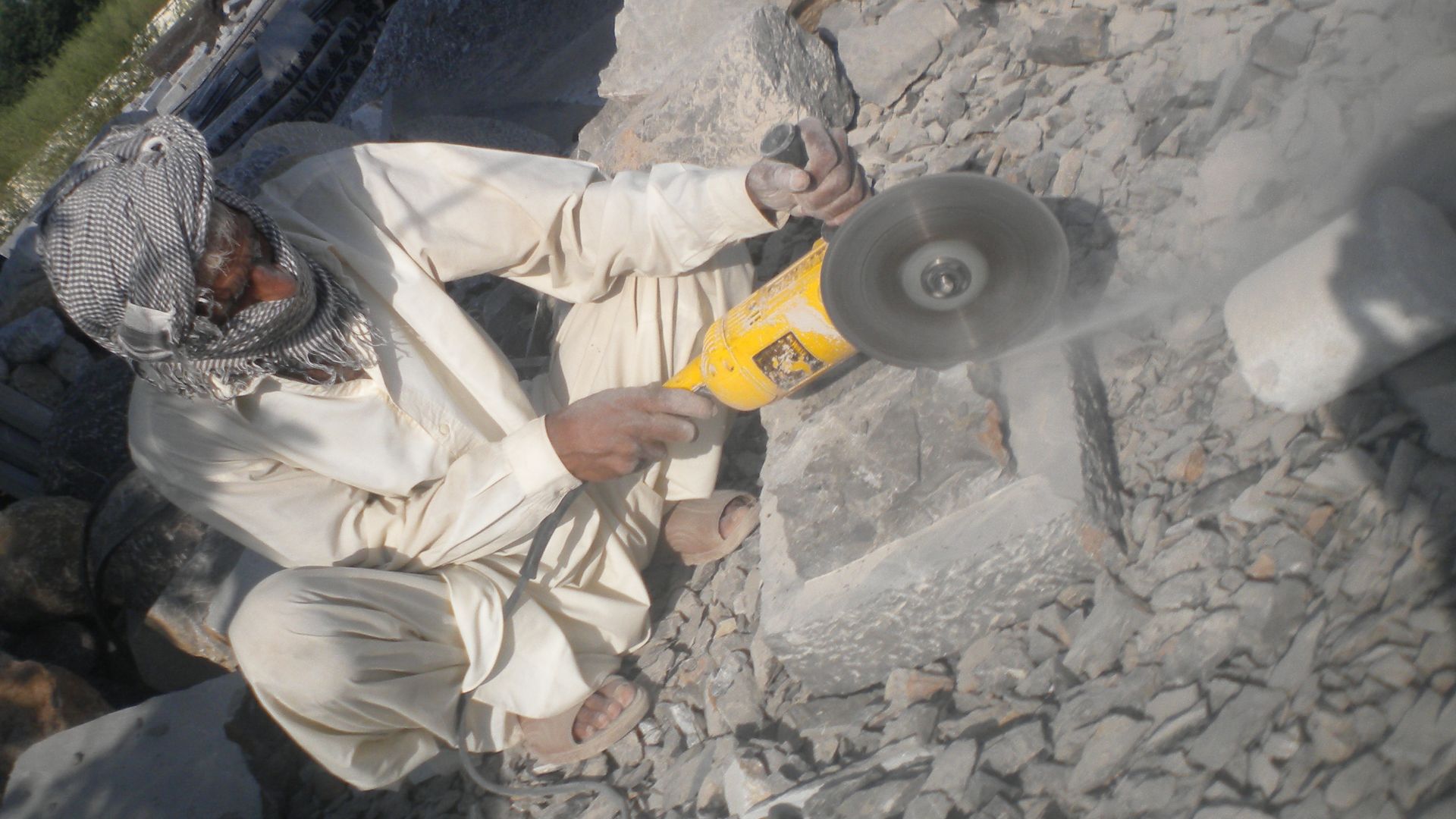 Khalid Mahmood, Wikimedia Commons
Khalid Mahmood, Wikimedia Commons
Lost Civilizations And Their Tools
History has a blind spot: what came before what we can prove. Some archaeologists suggest there was a civilization before the Egyptians and they were advanced. Maybe not in electricity or Wi-Fi, but in engineering. They vanished and the Egyptians inherited the bones. Could this be true?
Ancient Statues Vs Modern Machines
Put the marks under a microscope. Compare the tooling lines on the colossus to what you'd get from a modern CNC lathe. The resemblance will mess with your head. Engineers who've taken the time to look closely are skeptical. Some admit the results are uncomfortably close.
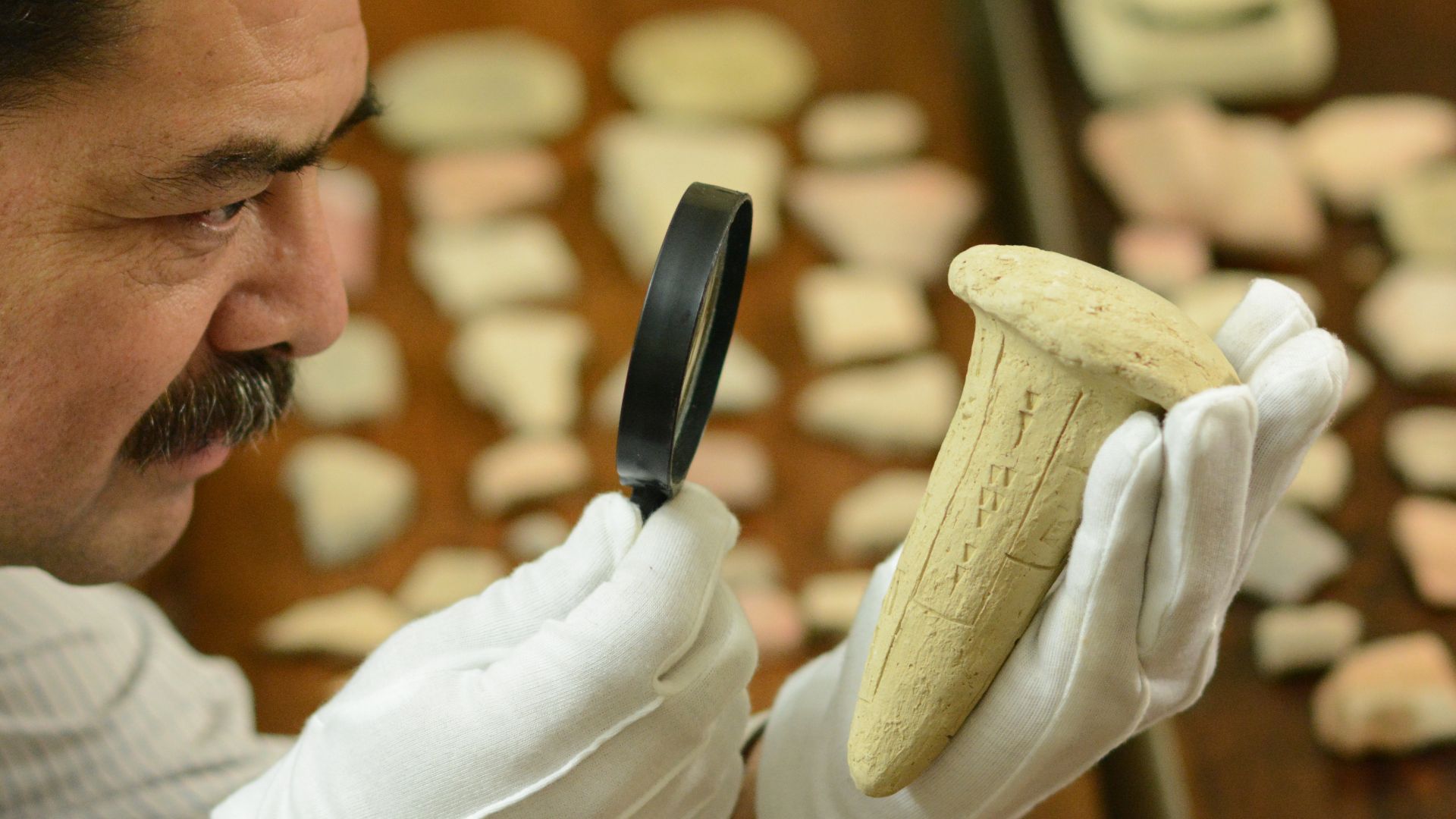 Santabiblia, Wikimedia Commons
Santabiblia, Wikimedia Commons
Unpacking The Impossible
The big question echoes through the desert: if they didn't do it by hand, how did they do it at all? The tools are missing and the records are silent but the results are unmistakable. Anyone who stood beside that statue, knows that our assumptions are smaller than the ruins.
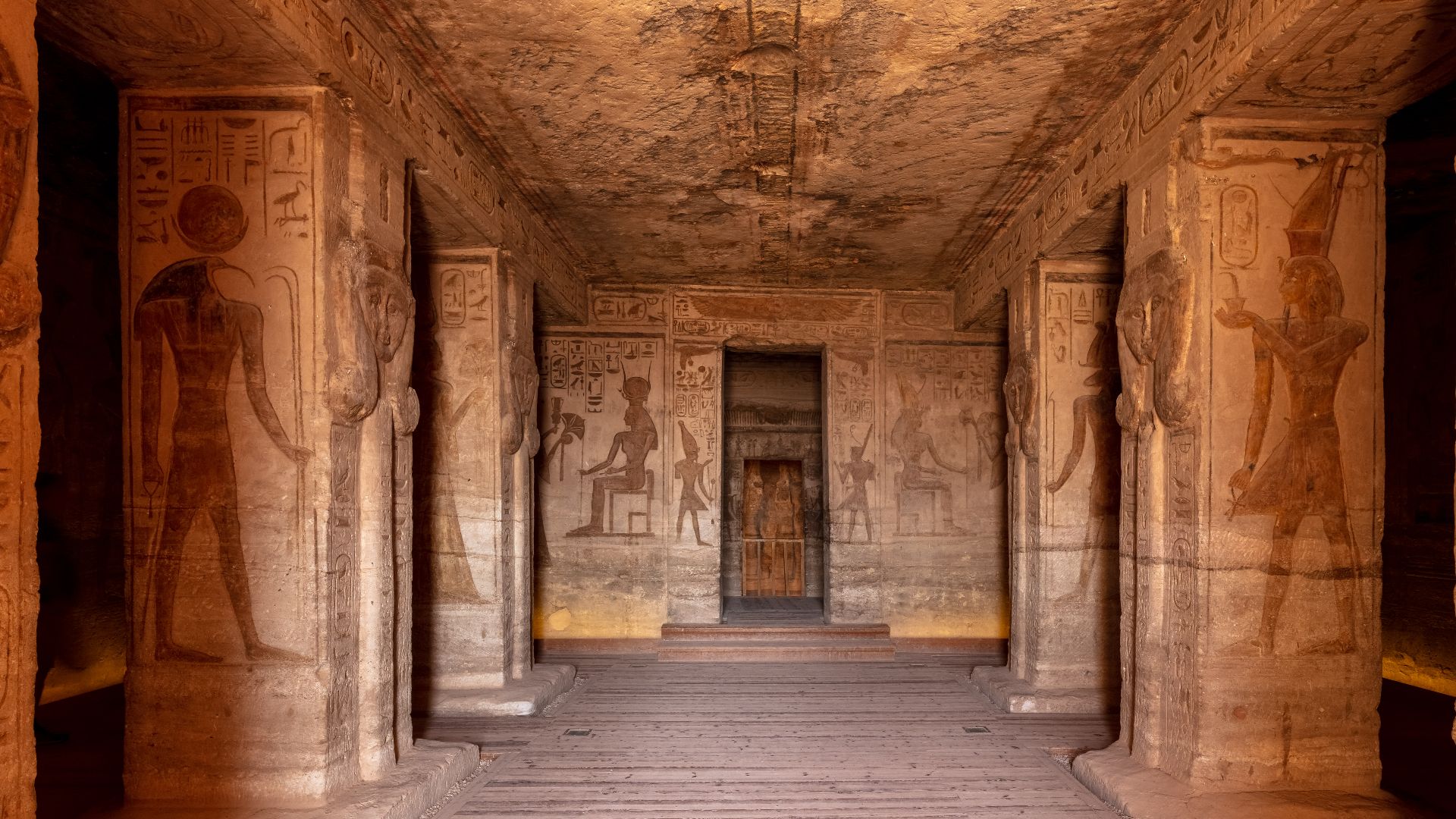 Diego Delso, Wikimedia Commons
Diego Delso, Wikimedia Commons
Shelley's Poem And Egypt's Truth
Shelley never saw the Ramesseum. But somehow, he nailed the description. A shattered statue in a silent land. It was fiction but the reality is even louder in its quiet. Read his poem "Ozymandias", then stand beside the wreckage, and suddenly it stops being literature.
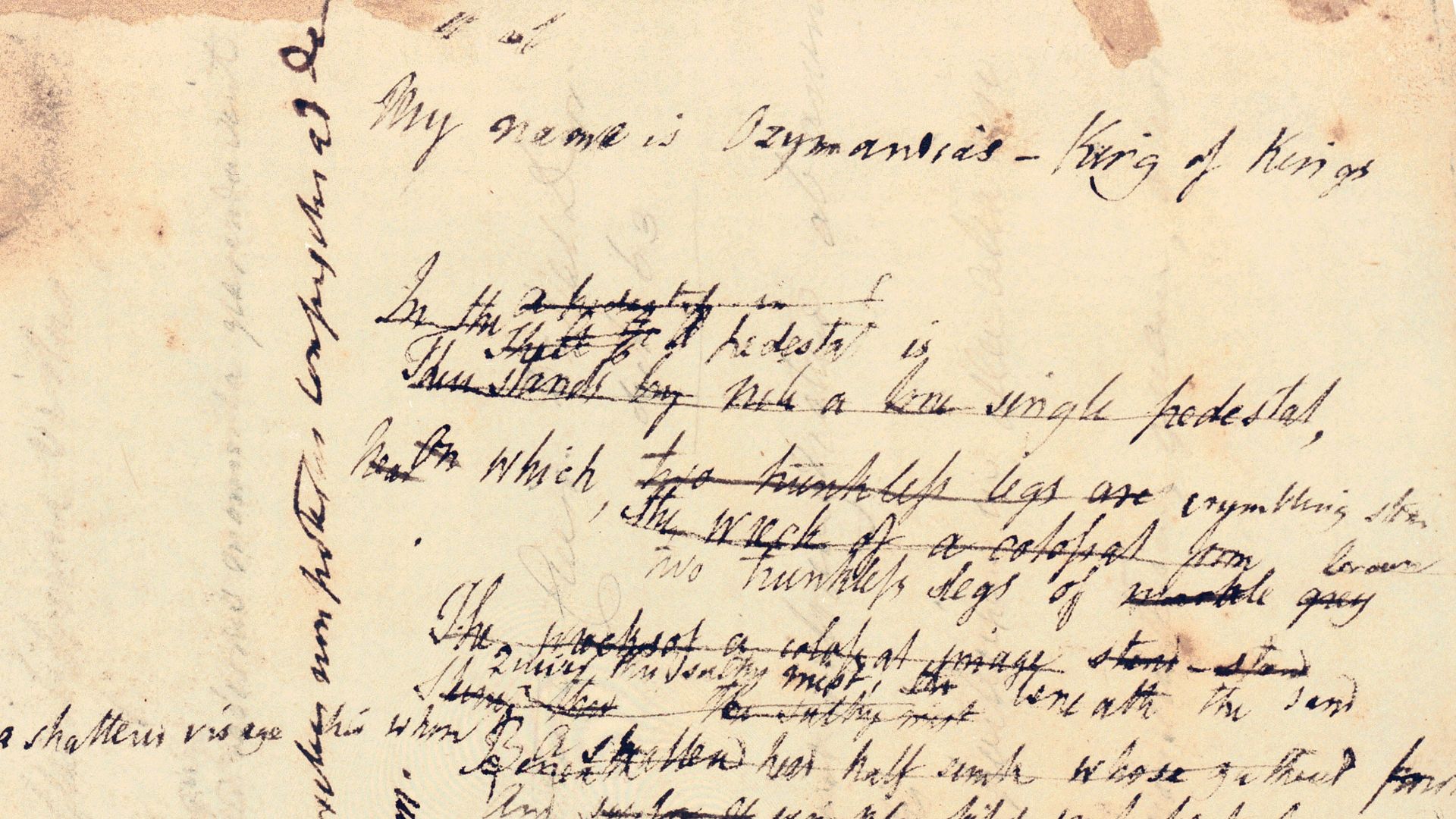 Percy Bysshe Shelley, Wikimedia Commons
Percy Bysshe Shelley, Wikimedia Commons
A Monument To Ego And Eternity
This statue wasn't for the people. It was for the gods or maybe just for Ramesees. A physical shout into the future, daring time to forget his name. Whether it was ego or ambition, the result is the same. A temple of self, now hollowed out by centuries.
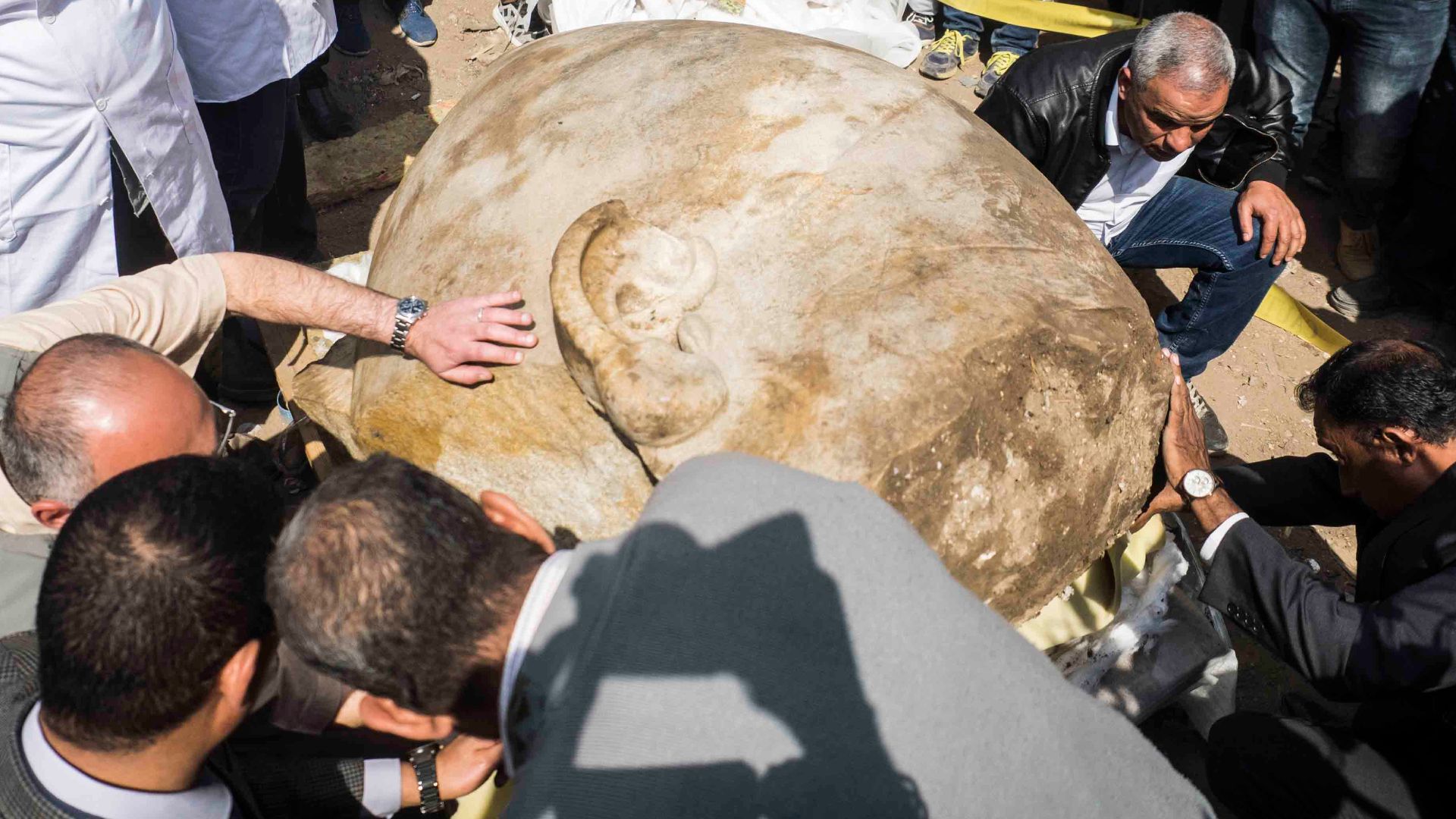 Hamada Elrasam/VOA News, Wikimedia Commons
Hamada Elrasam/VOA News, Wikimedia Commons
The Symbolism Of Size
The ancient world measured power in stone, and the bigger the stone, the closer to the divine. Ramesses wanted to be worshipped. That's why his statue towers even in shattered pieces. It reminds us that once, a man tried to make himself a god, and came closer than most.
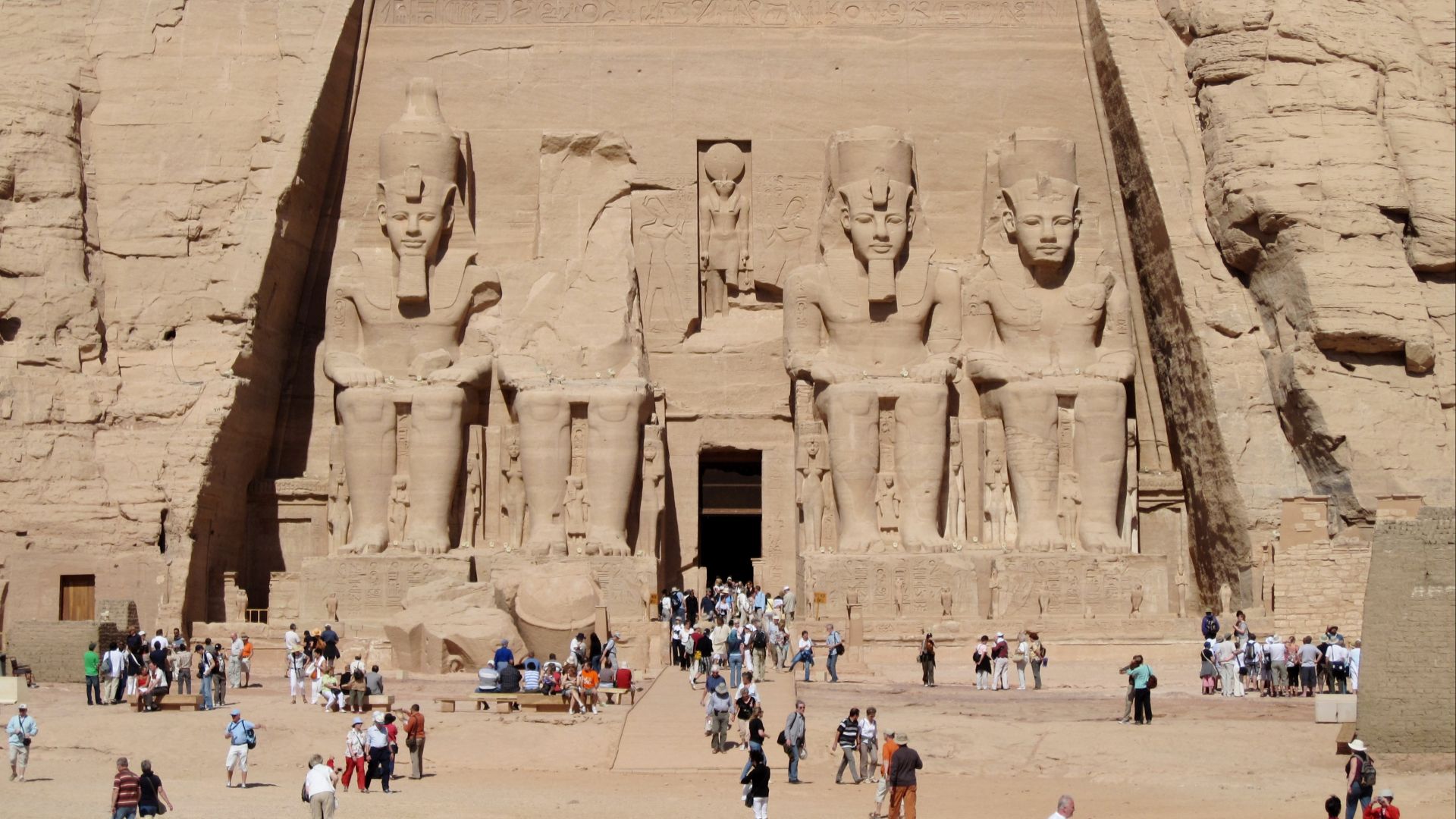 Olaf Tausch, Wikimedia Commons
Olaf Tausch, Wikimedia Commons
Naming The Winner
You'd think time won. The statue's down and the temple eroded. But then again—here we are, talking about the Egyptian King. Time took the structure, but it couldn't kill the story. Ramesses may have lost the battle of matter, but he hijacked the war for memory.
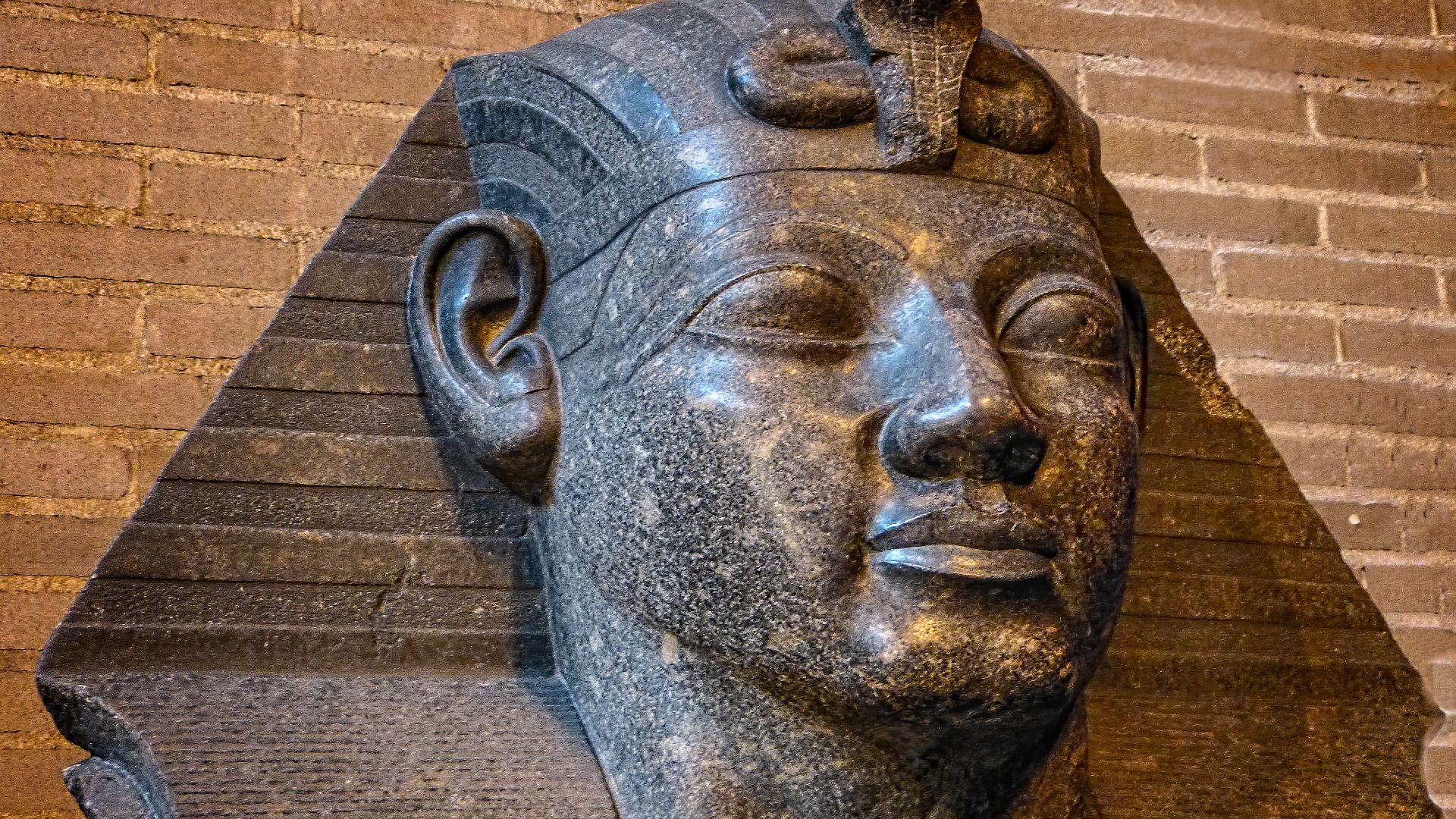 Mary Harrsch, Wikimedia Commons
Mary Harrsch, Wikimedia Commons
Mainstream Archaeology Weighs In
Modern archaeologists are relentlessly digging, trying to find the secret. They believe that the destruction was natural due to erosion or earthquakes. They also believe that looting and chaos might have destroyed the site further. But none of these reasons explain the fire marks.
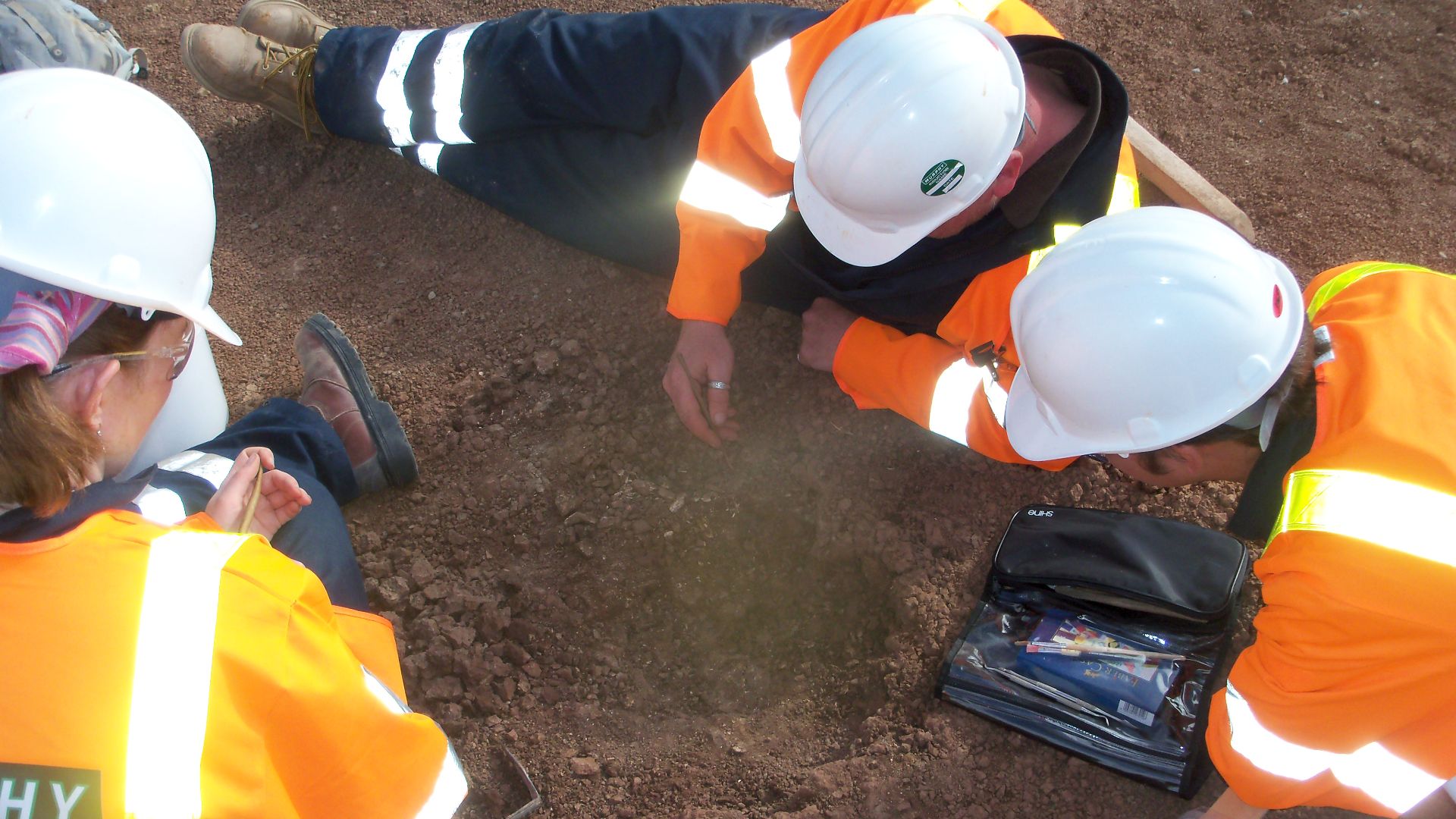 Network Archaeology Ltd, Wikimedia Commons
Network Archaeology Ltd, Wikimedia Commons
Alternative Theories On The Rise
Not everyone buys the textbook version. Those who don't are not all wearing tinfoil hats. Engineers and independent scholars are showing up with measuring tools and open minds. Some believe in lost civilizations, while others whisper about cataclysmic solar events.
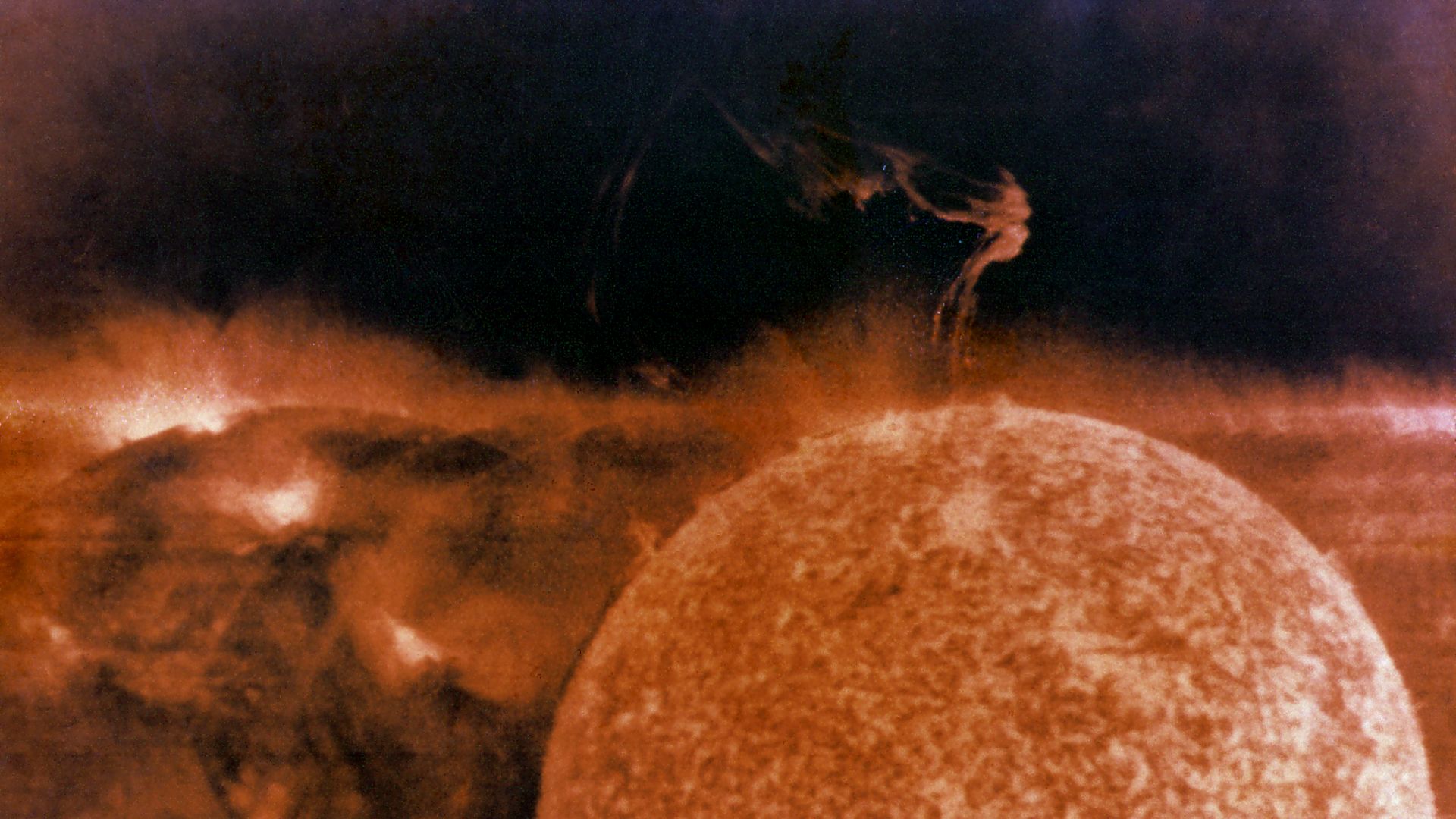 NASA Marshall Space Flight Center, Wikimedia Commons
NASA Marshall Space Flight Center, Wikimedia Commons
A Battle Of Interpretations
Mainstream opinions say erosion. Fringe scholars suggest a flash burn. In the middle stands a statue with layers peeling like cooked meat and surfaces that glint like glass under the sun. It's a duel of worldviews where one side sees coincidence and the other sees evidence.
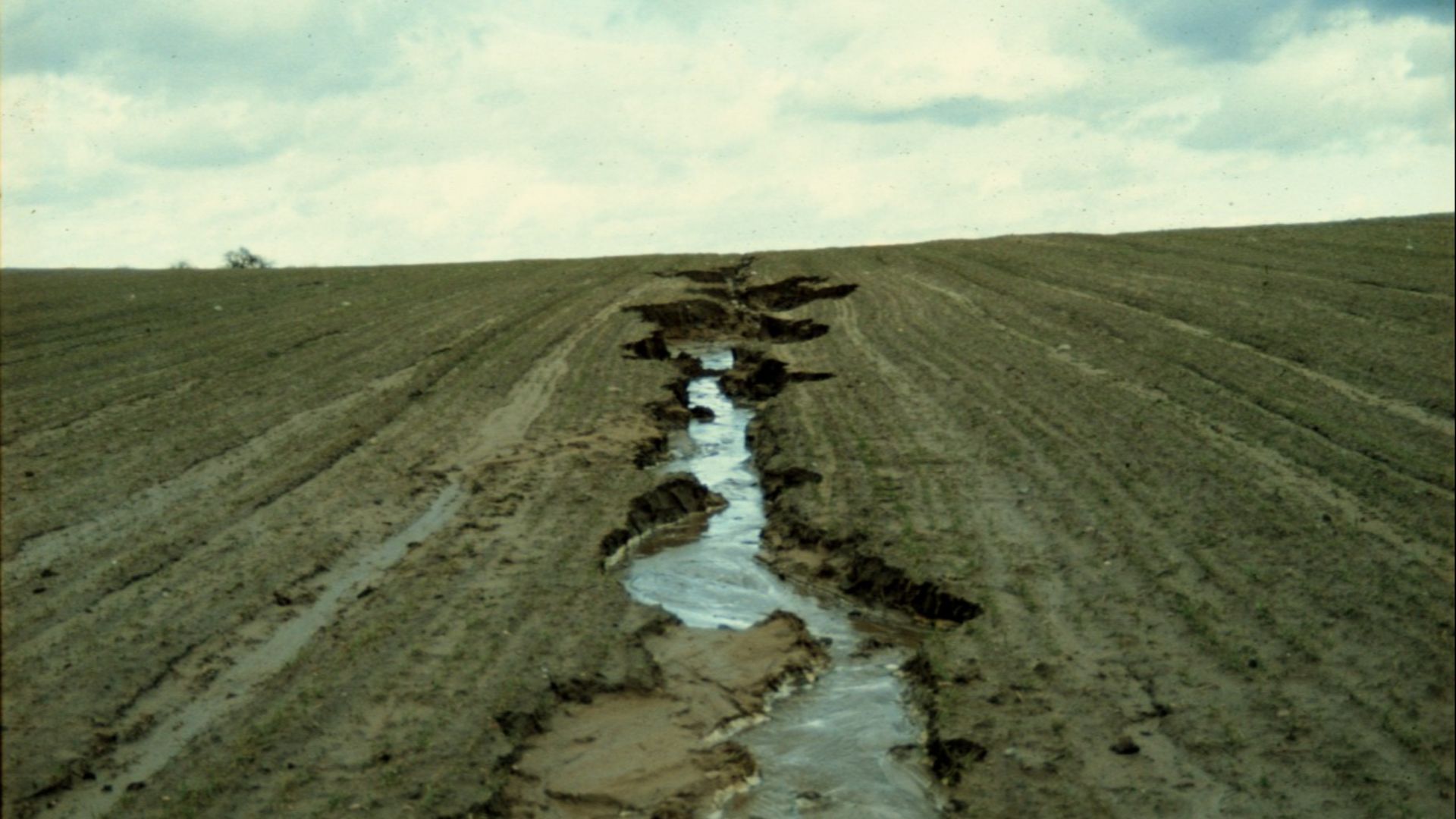 Katharina Helming, Wikimedia Commons
Katharina Helming, Wikimedia Commons
The Debate Over Dating
Here's where it gets messy. Mainstream Archaeology dates the colossus to the 13th century BCE, right in the heart of Ramesses II's reign. However, some fringe theories claim the work is much older. They point to weathering patterns and a style that doesn't line up with other dynastic pieces.
And The Missing Pieces
Although the head and other pieces remain, whole sections are gone. They're not broken or buried. They're nowhere to be found. A lot of scientists believe that they were repurposed or hauled off. Others wonder if they vanished during the event that destroyed the statue.
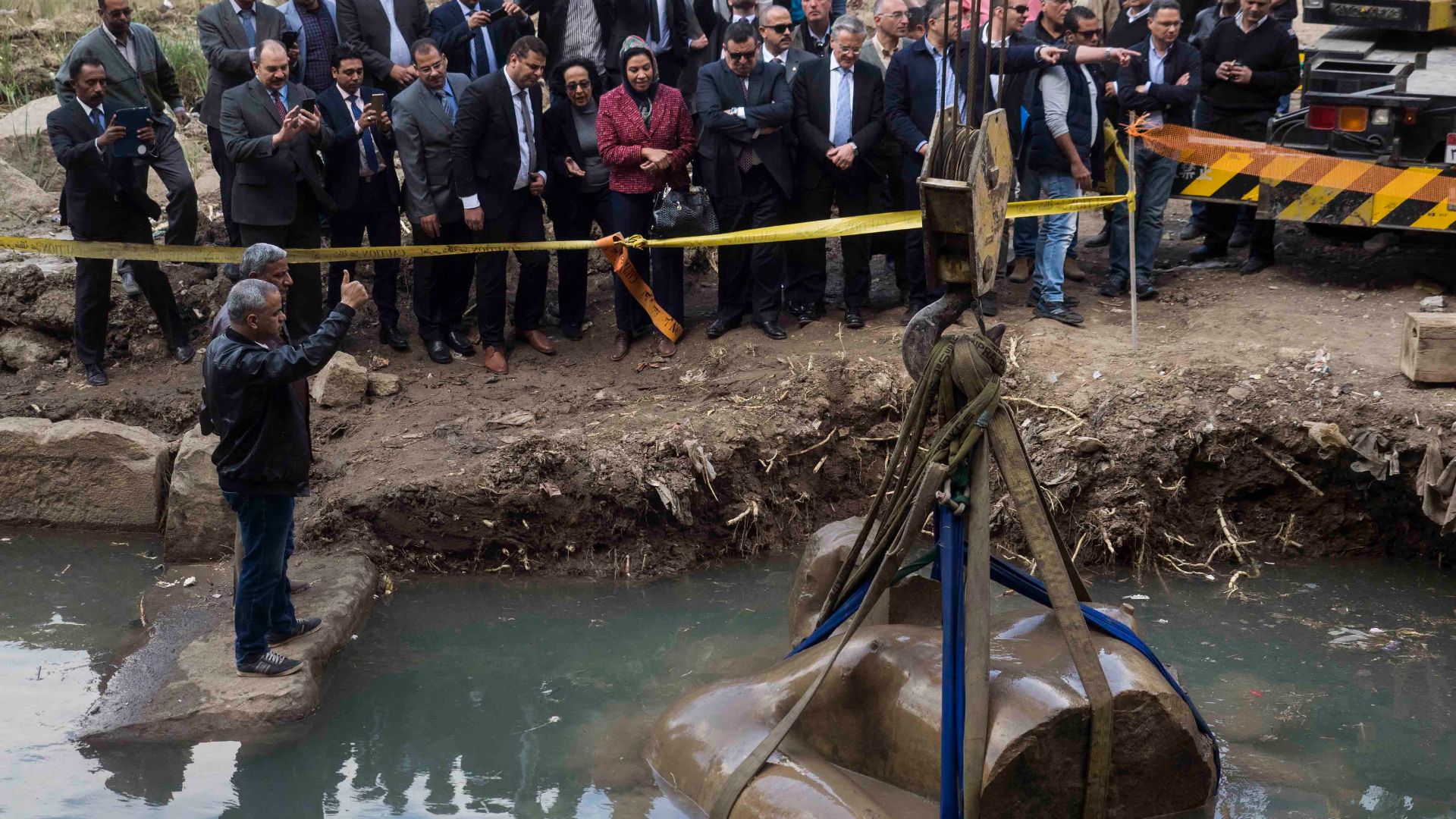 Hamada Elrasam/VOA News, Wikimedia Commons
Hamada Elrasam/VOA News, Wikimedia Commons
A Message To The Valley Of The Kings
The colossus looked straight toward the Valley of the Kings. Ramesses was probably aiming a message right across the Nile: "I am the one who built eternity". Standing there now, tourists can still feel the alignment.
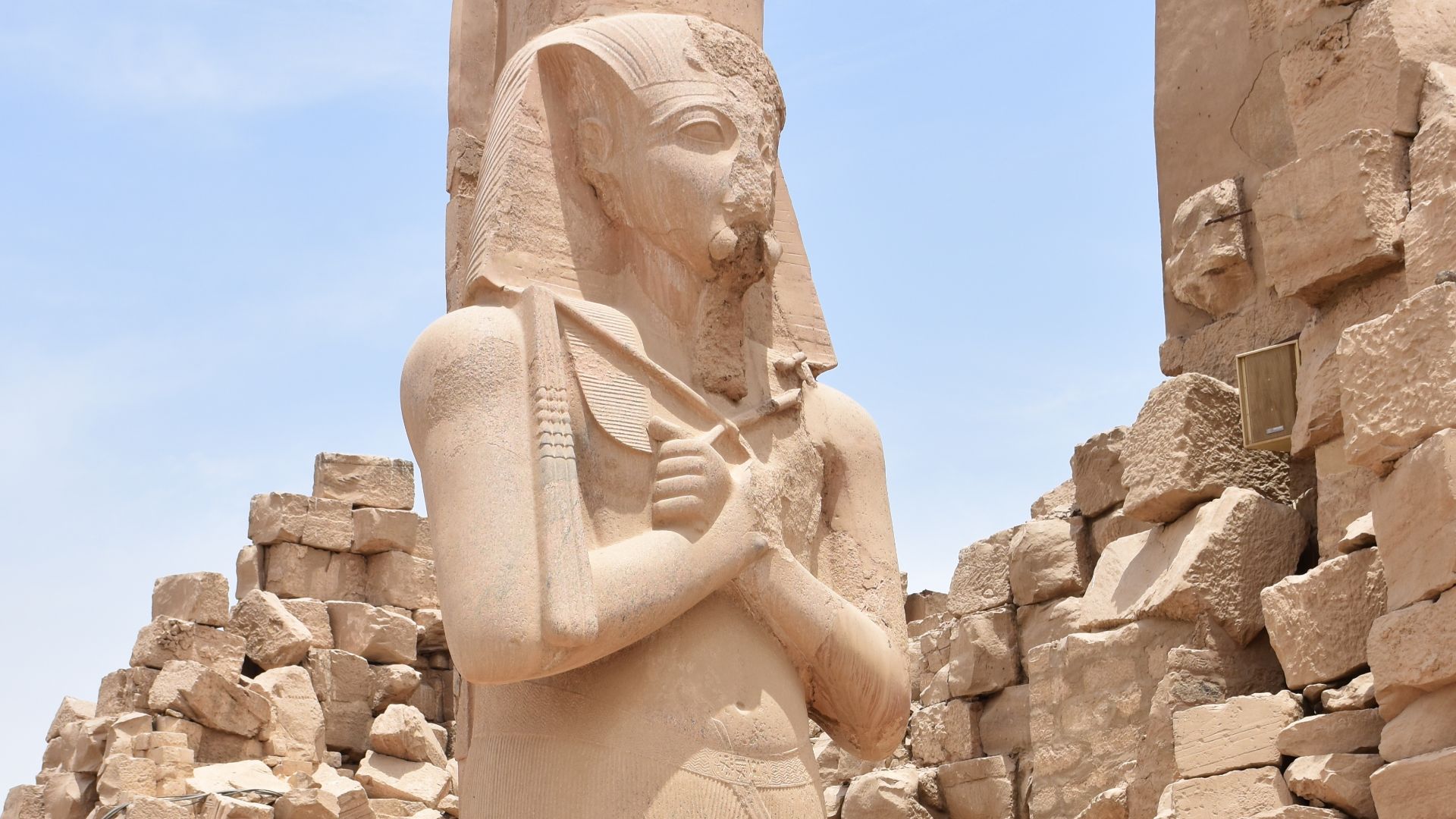 MusikAnimal, Wikimedia Commons
MusikAnimal, Wikimedia Commons
This Could Have Been A Deliberate Destruction
Judging by the looks, this statue didn't fall gently. It shattered and was torn from limb to limb. Although some say it toppled naturally, many wonder if something or someone meant for it to fall. Was this political revenge or religious cleansing?
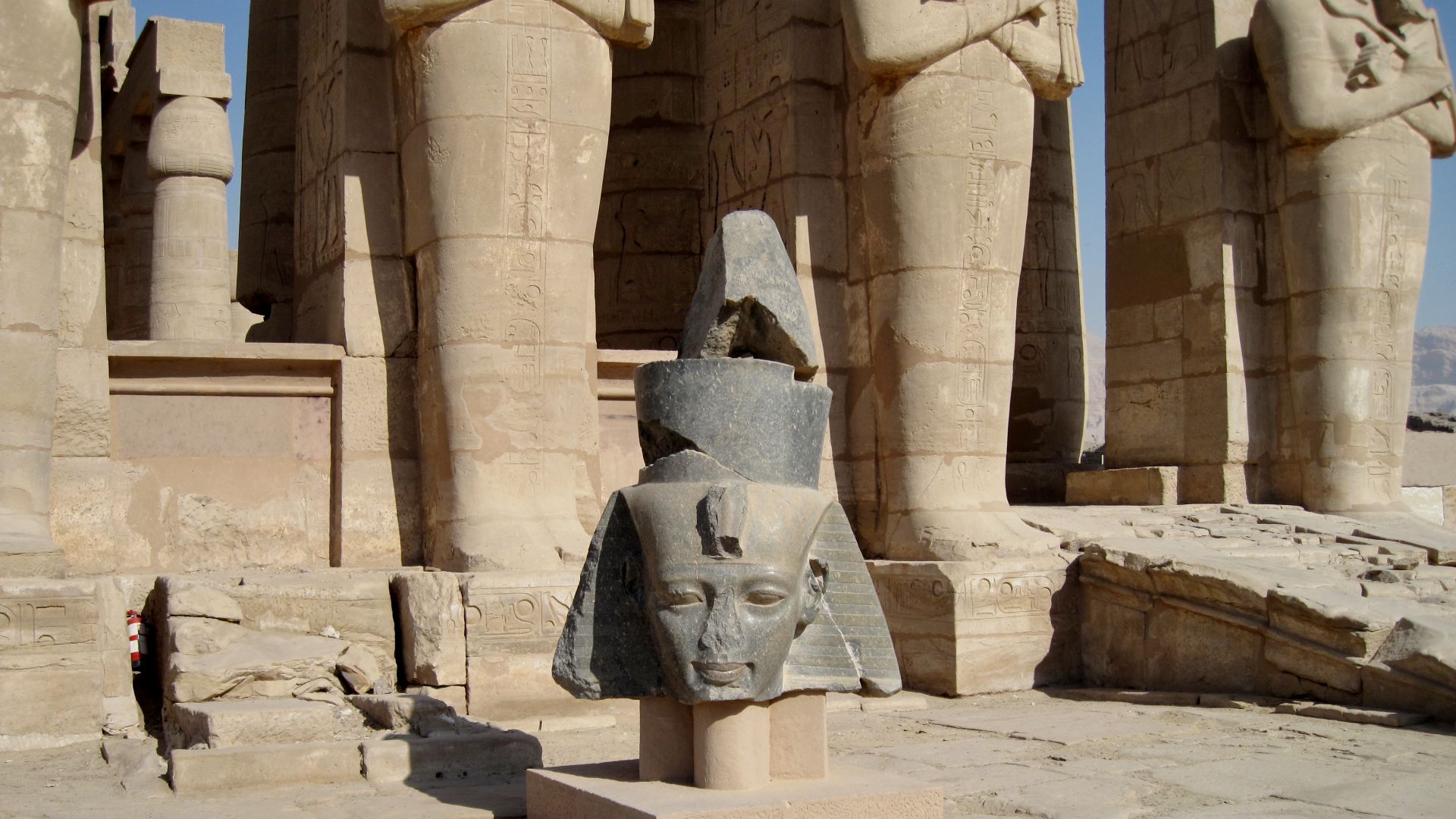 Olaf Tausch, Wikimedia Commons
Olaf Tausch, Wikimedia Commons
The Silence Of The Stones
For all the theories, the scans, the footage, and the debates, some things remain stubbornly silent. The grooves and the burns can't be explained and every clue seems to lead to another question. They just sit there, daring you to ask the next question.
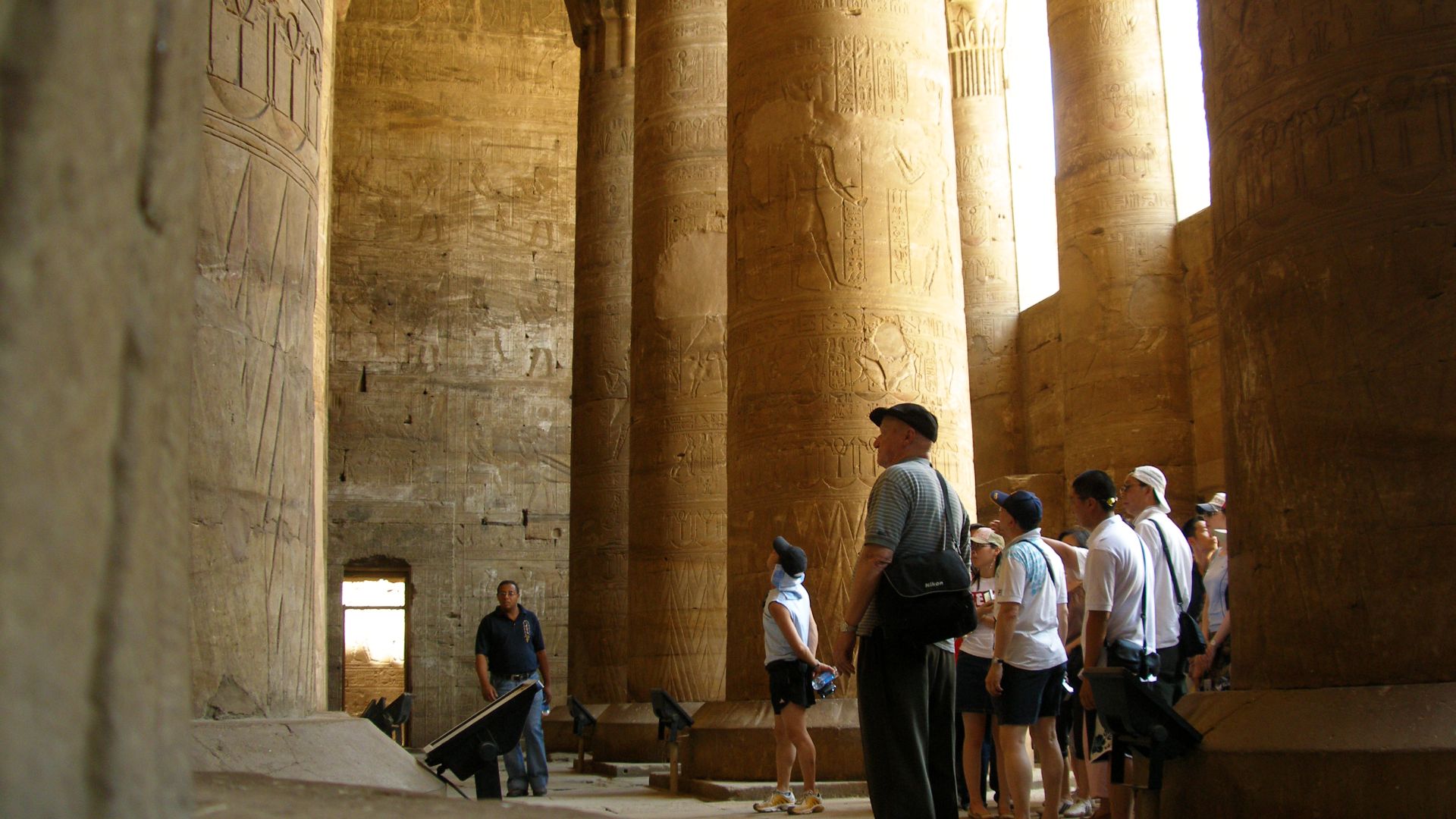 Vyacheslav Argenberg, Wikimedia Commons
Vyacheslav Argenberg, Wikimedia Commons
Touring The Ramesseum
It's not a normal tour, and there's no souvenir shop. The Ramesseum doesn't sell you a story but dares you to make your own. As you walk through the halls and courtyards, you drift through layers of time.
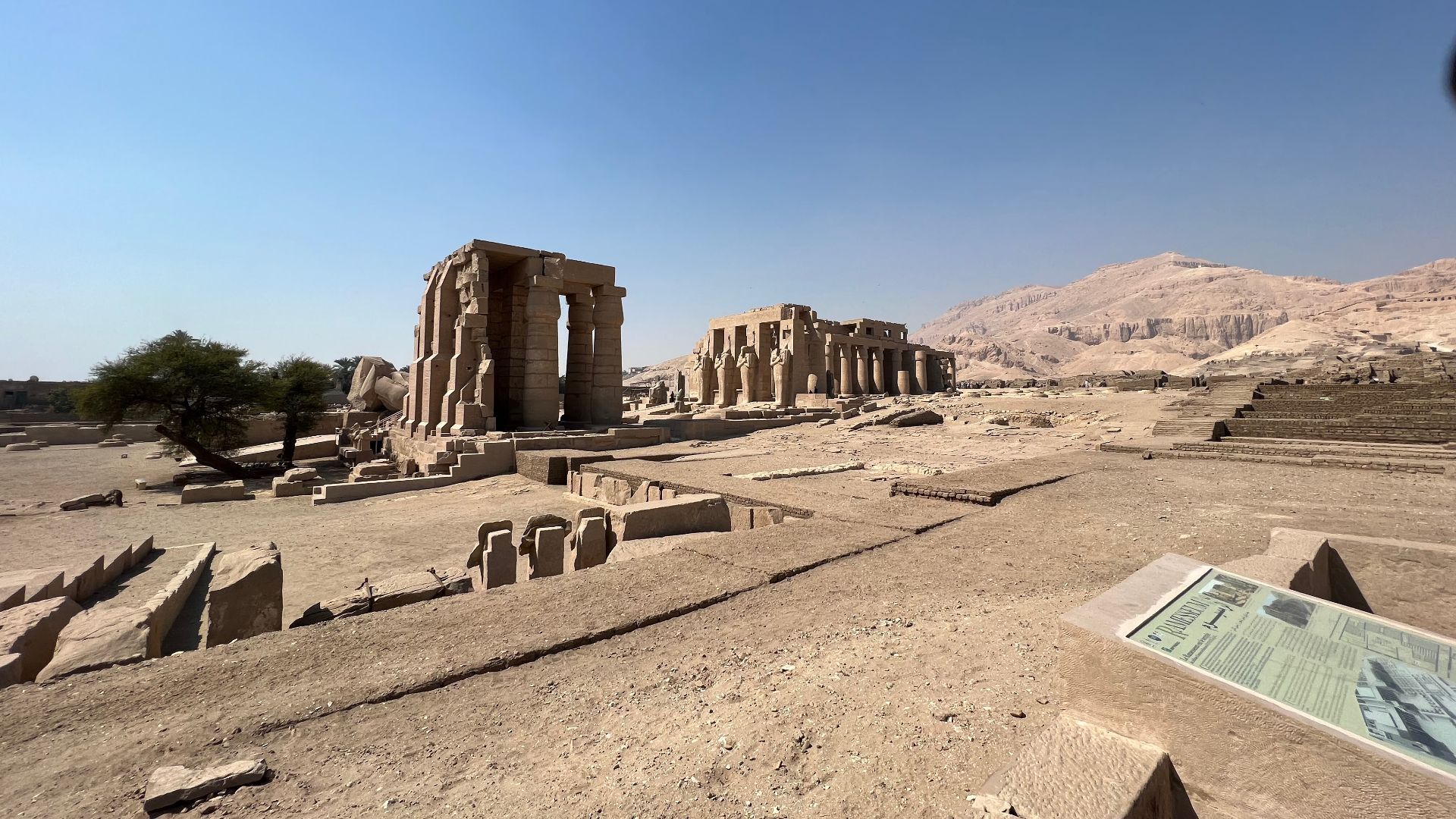 Onceinawhile, Wikimedia Commons
Onceinawhile, Wikimedia Commons
What Still Haunts Us
After the tour, something lingers. Maybe it's the questions or the size of a giant now lost to time. The Ramesseum doesn't scream to be remembered. It doesn't need to. It plants itself in your mind and waits. Quiet and immovable like the feet of its fallen King.
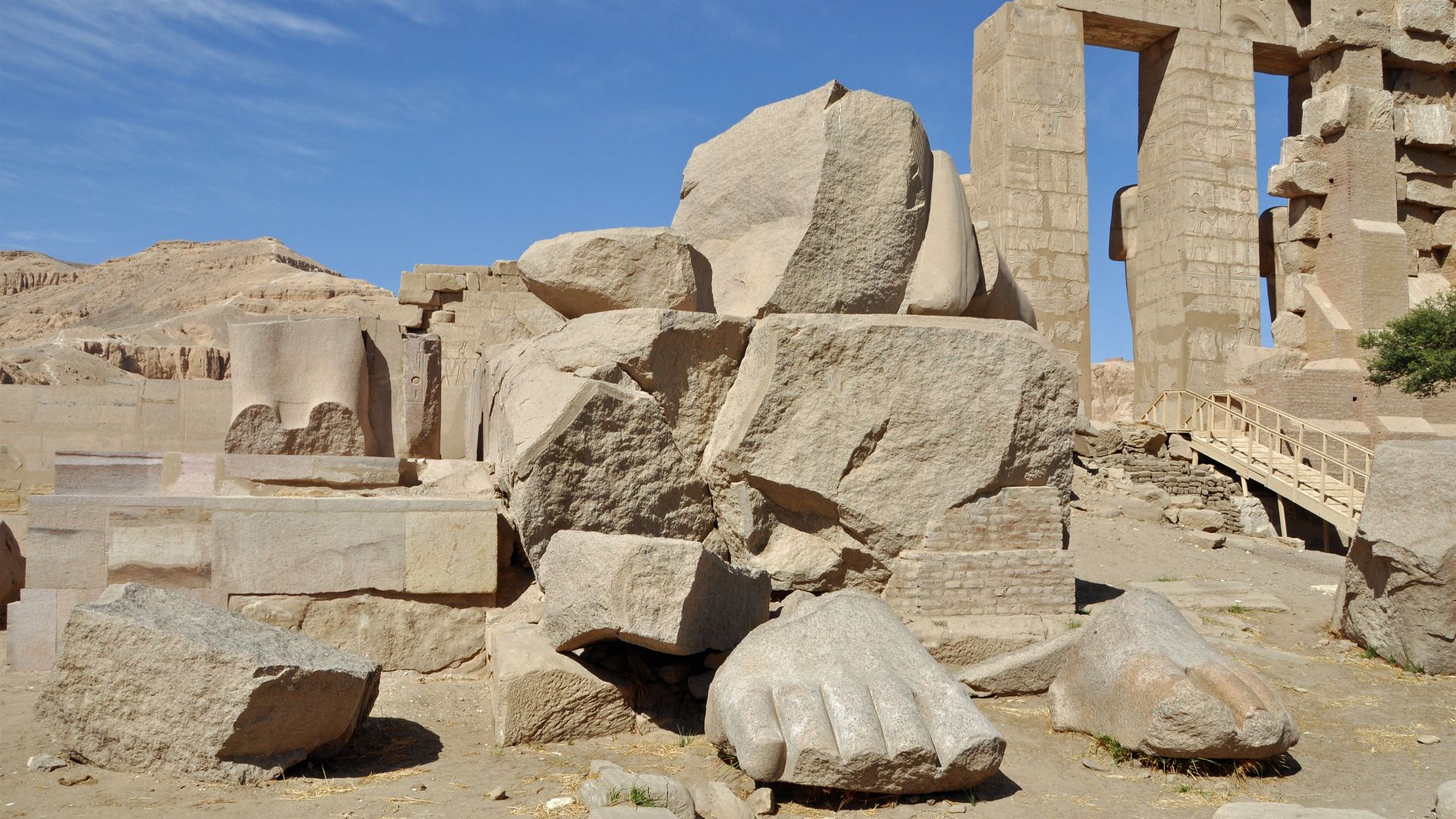 Marc Ryckaert, Wikimedia Commons
Marc Ryckaert, Wikimedia Commons
A Thought Experiment
What if we could put it all back together? Every chunk and every ounce of ego-packed granite. Would it still inspire awe or feel like a monument stitched from ghosts? Architects have sketched it and engineers have theorized the logistics. But even on paper, the thing refuses to come quietly.
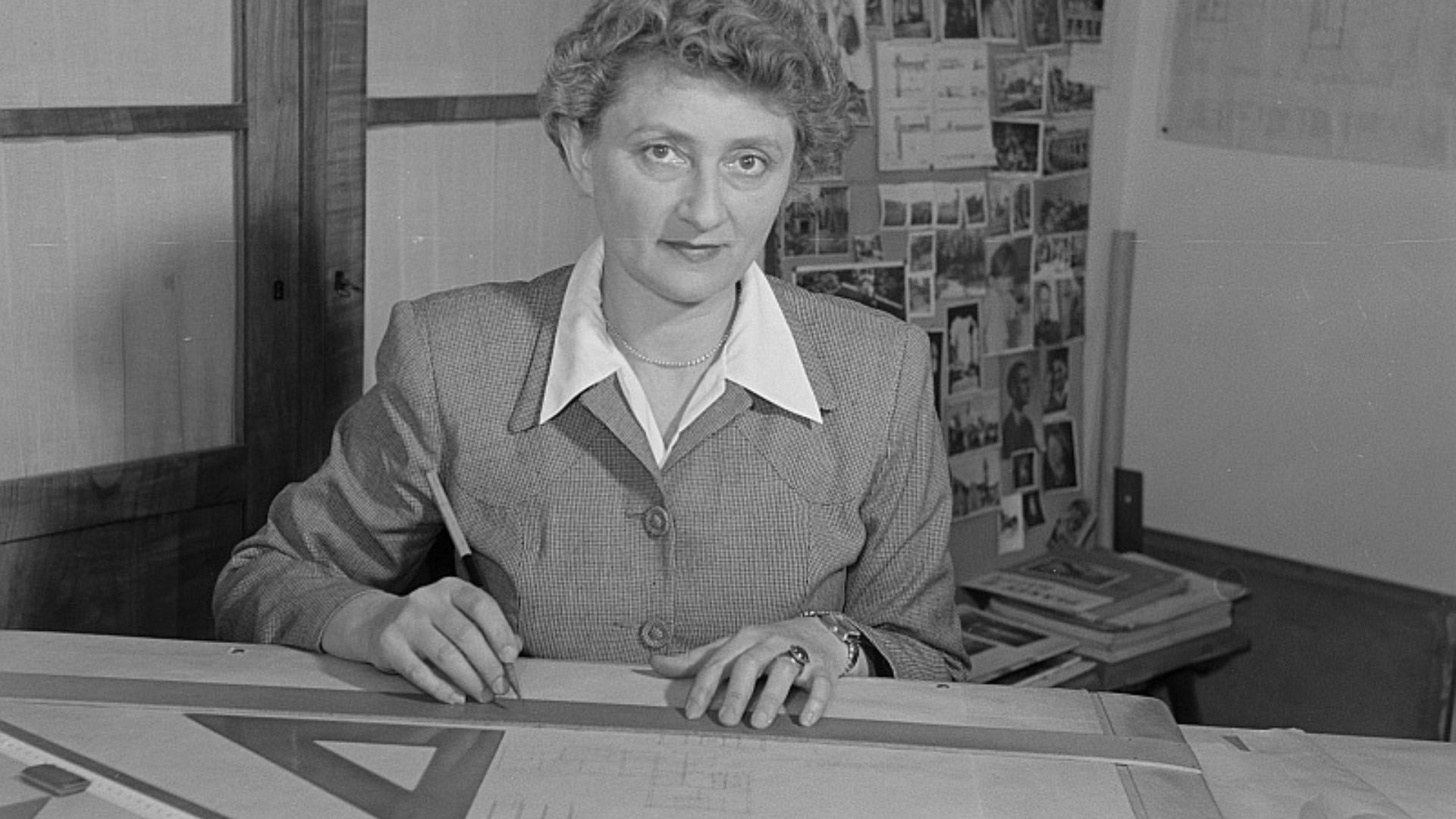 Roger Rossing / Renate Rossing, Wikimedia Commons
Roger Rossing / Renate Rossing, Wikimedia Commons
Replicating This Today
Ask a modern construction crew to lift a thousand-ton statue into place, and they'll probably blink a few times. Sure, we could try. Technology has come far but the ancient builders didn't use steel cranes or computer modeling. And yet here we are, staring at their work with jaws slack.
Re-Raising Ramesses
Since lifting the real thing seems unlikely, some have turned to pixels. 3D scans and virtual reconstructions offer endless possibilities. Technology might not rebuild the Ramesseum physically, but it's stitching the story back together for a new audience.
We Could Be Looking At This All Wrong
Maybe none of the theories are quite right. Maybe all of them are. What if we're missing the point entirely, not about how it was built, but why it still matters? The Ramesseum bends logic and scrambles timelines. That's the real mystery.
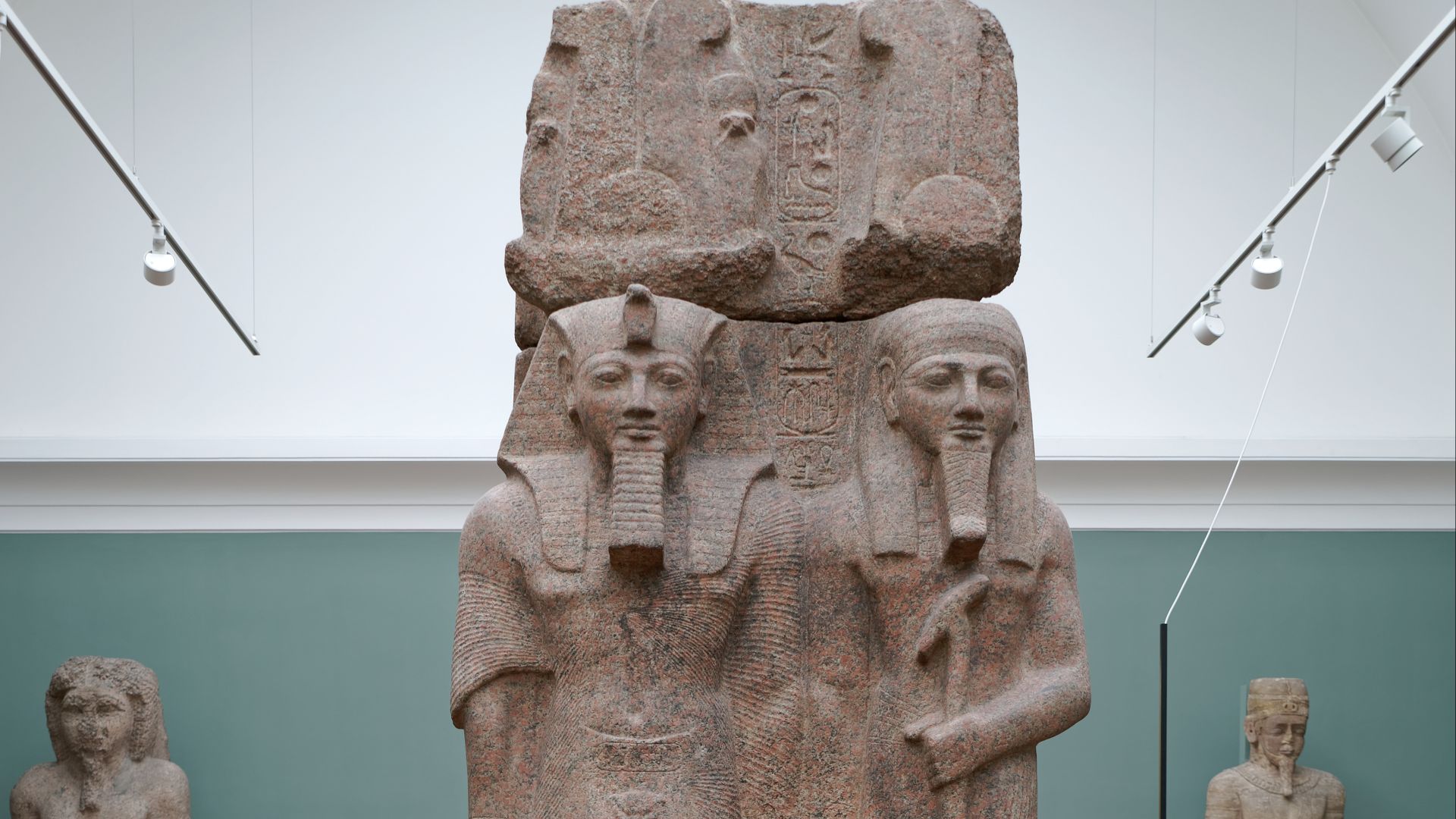 Jakub Hałun, Wikimedia Commons
Jakub Hałun, Wikimedia Commons
Something We're Still Too Arrogant To See
We measure and categorize every crack and groove. However, we could be missing the whole point. Every scar on the statue might be less about erosion and more about the message. A warning etched into granite, ignored for centuries because we assumed we knew better.
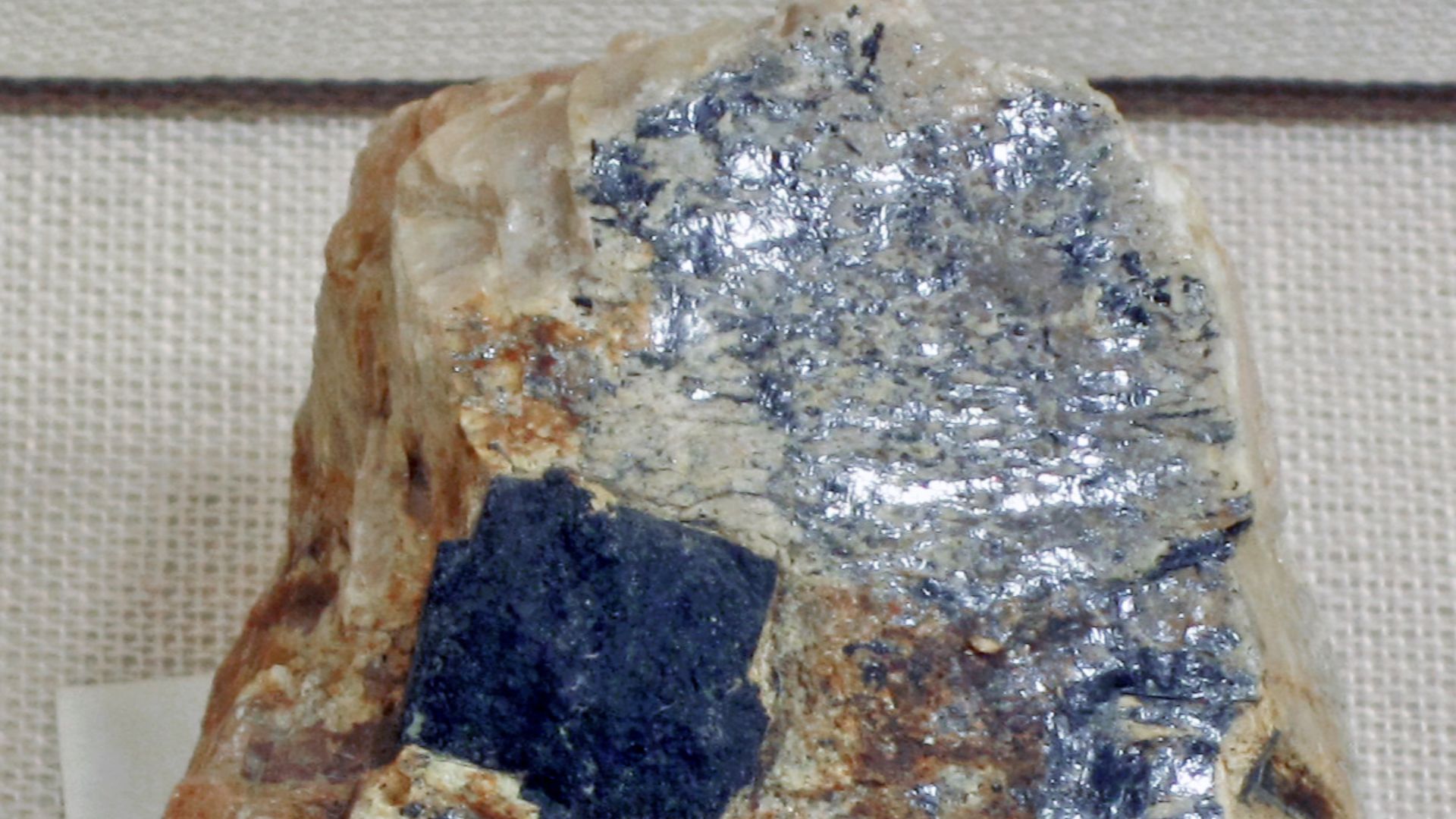 James St. John, Wikimedia Commons
James St. John, Wikimedia Commons

